
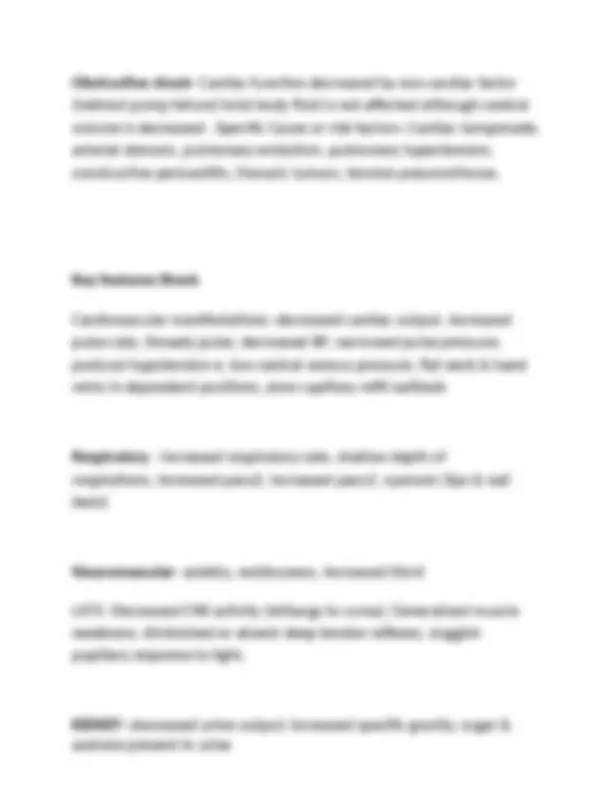
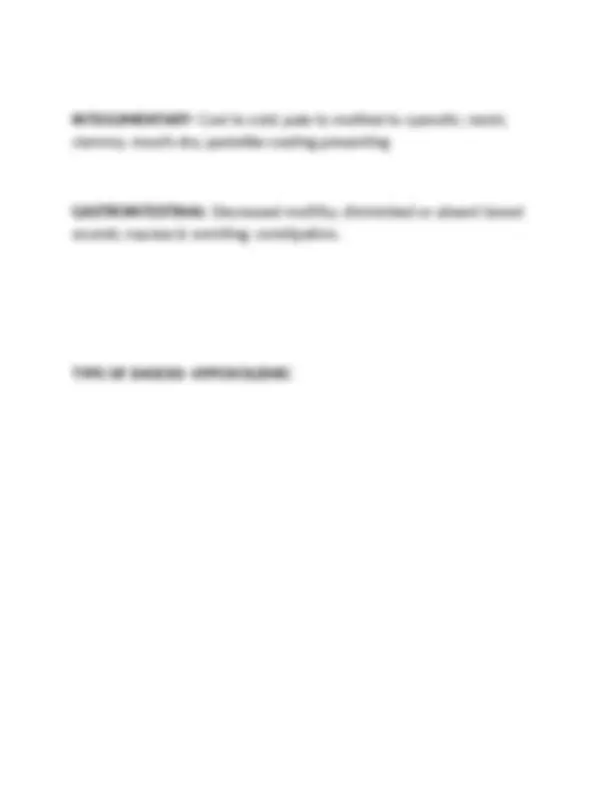
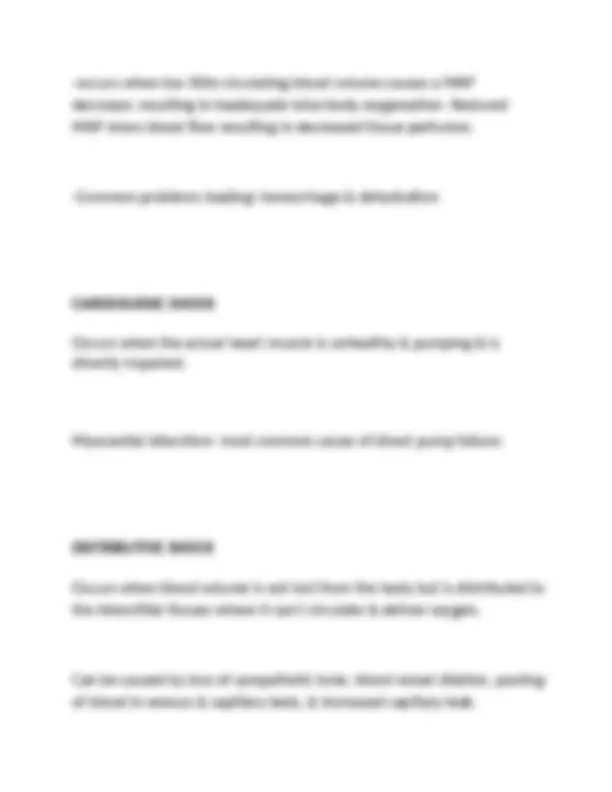
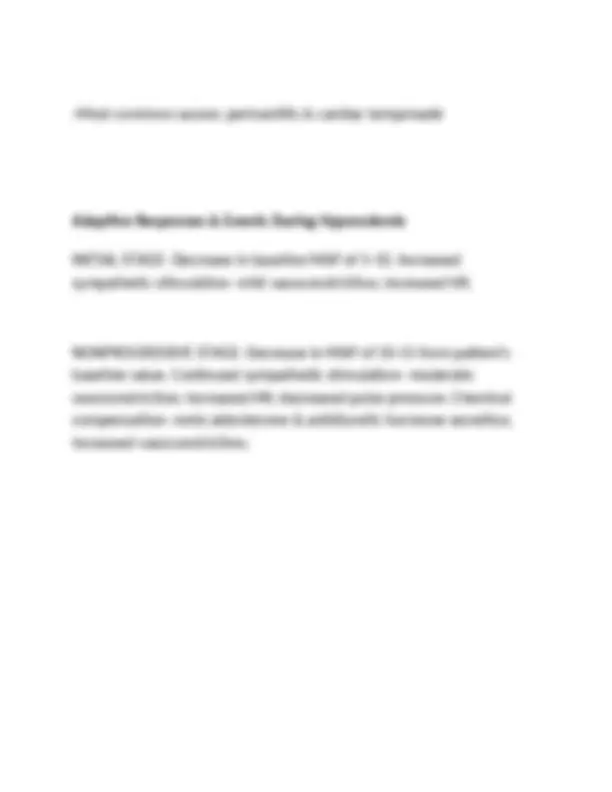
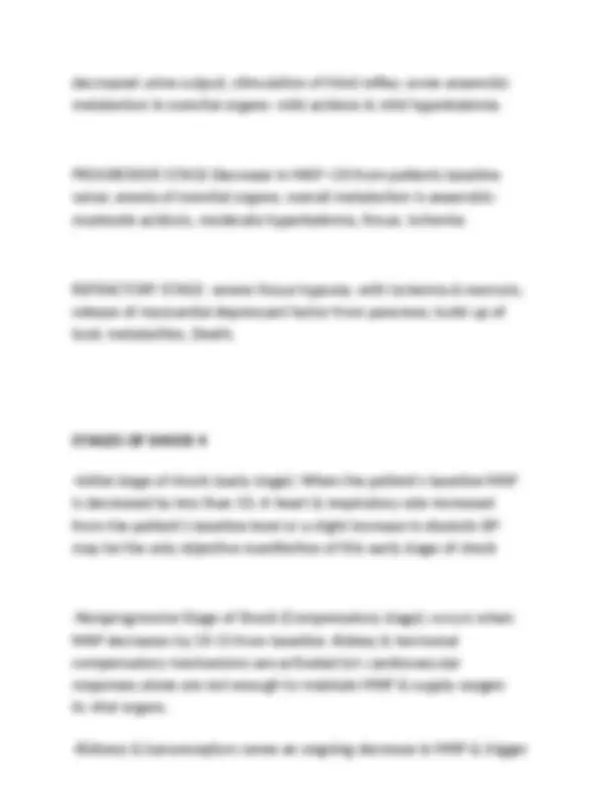
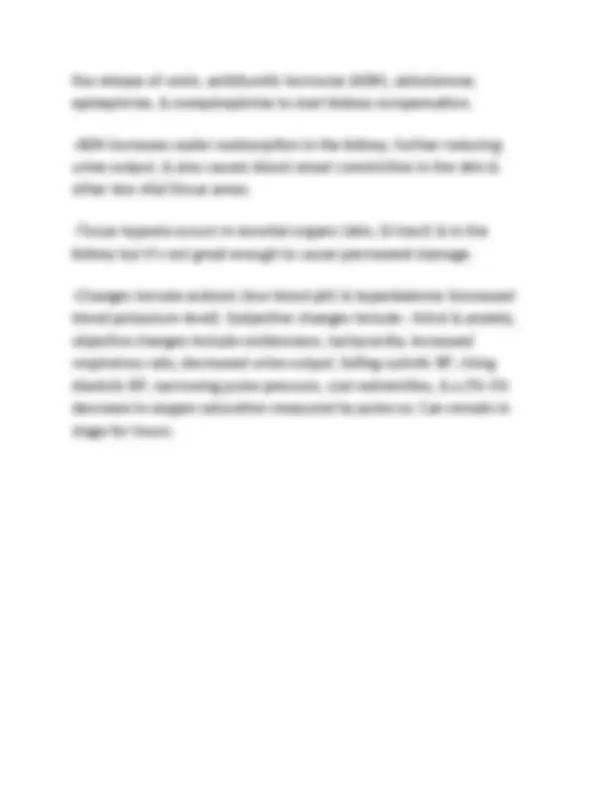
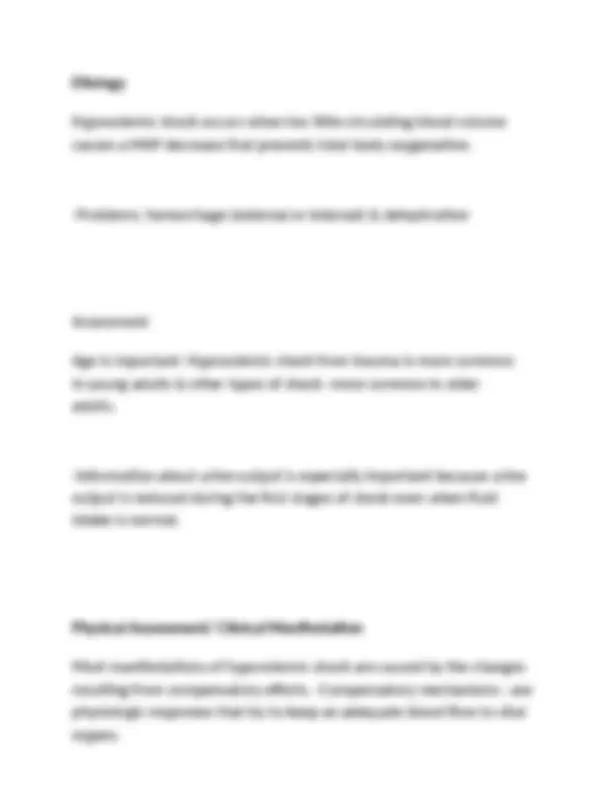
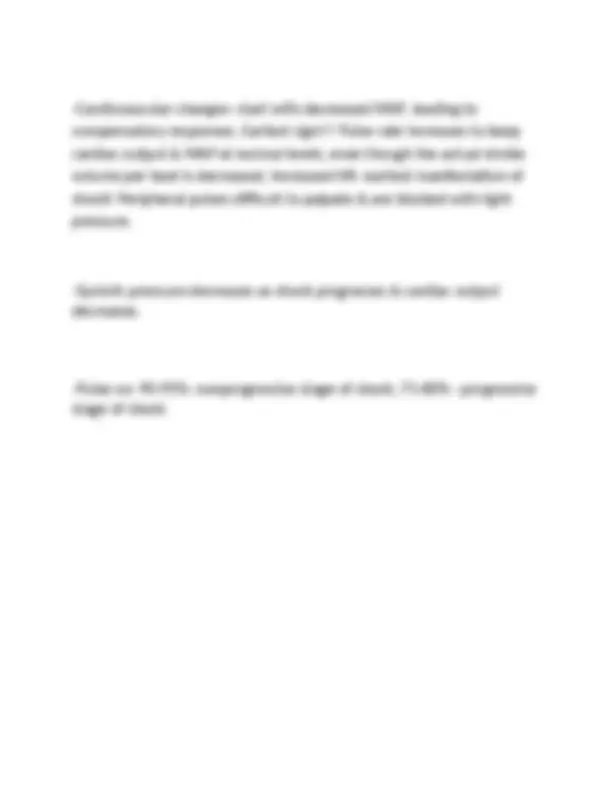
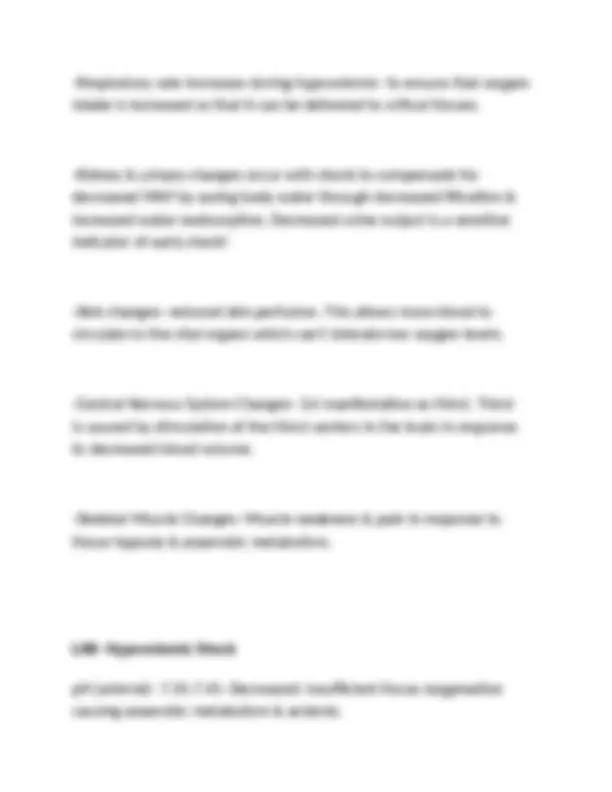
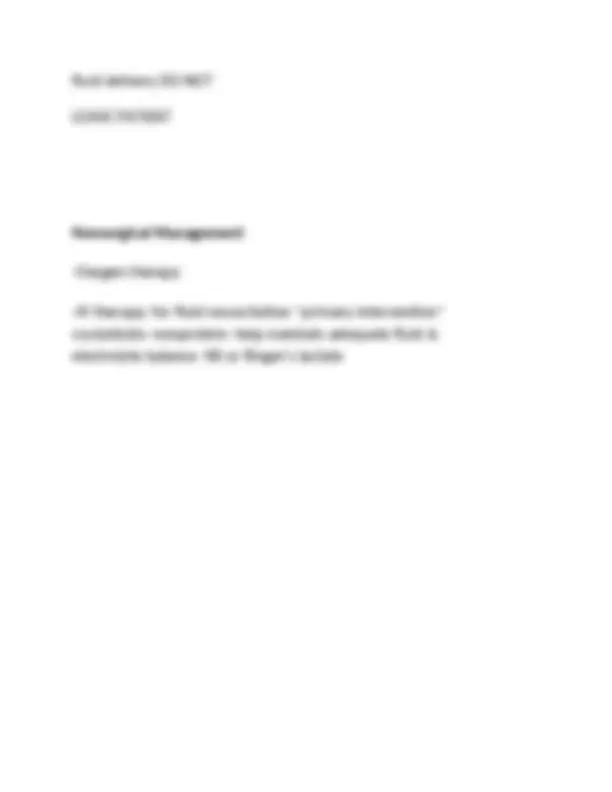
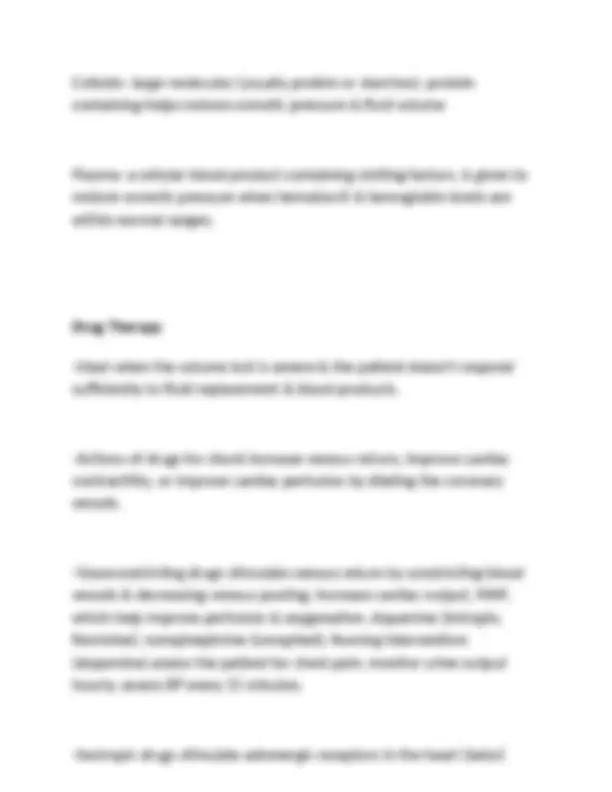
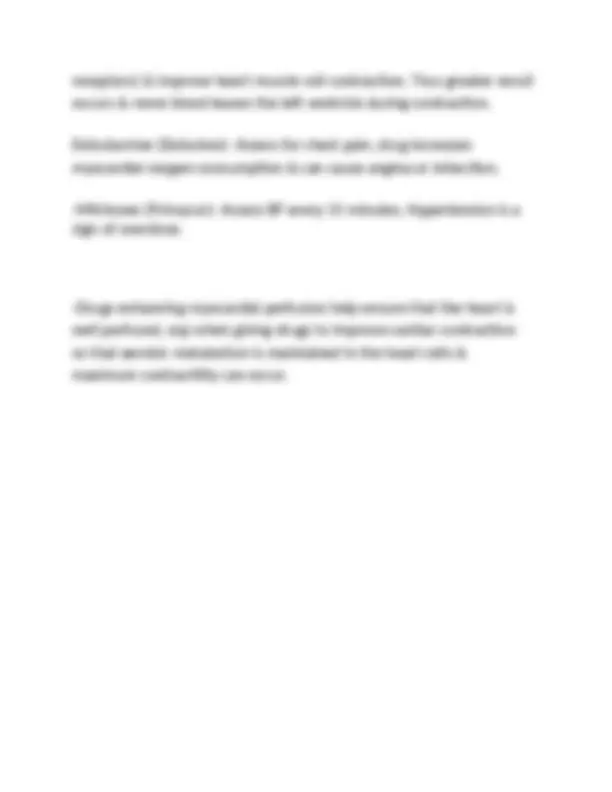
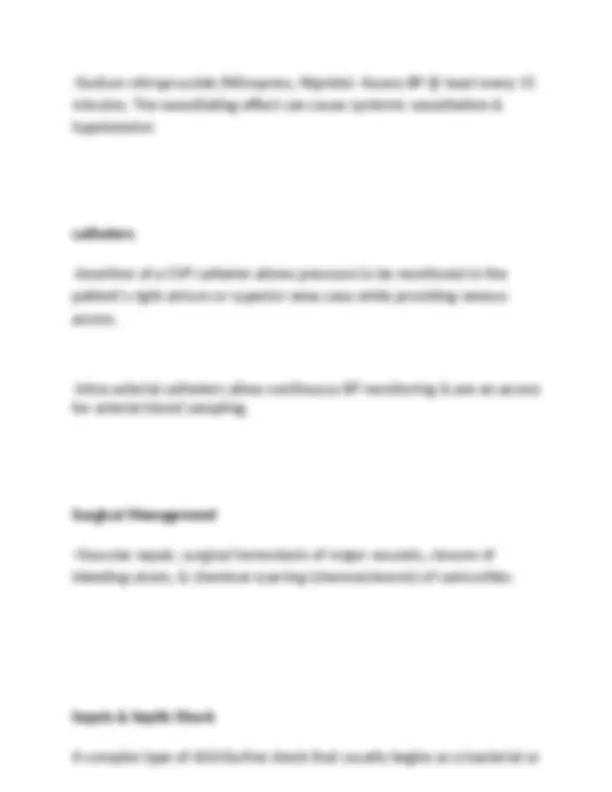
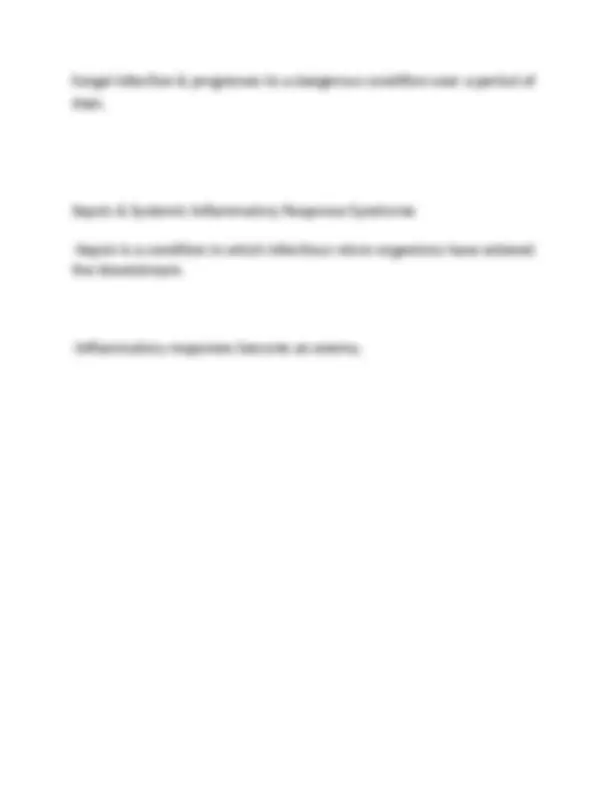
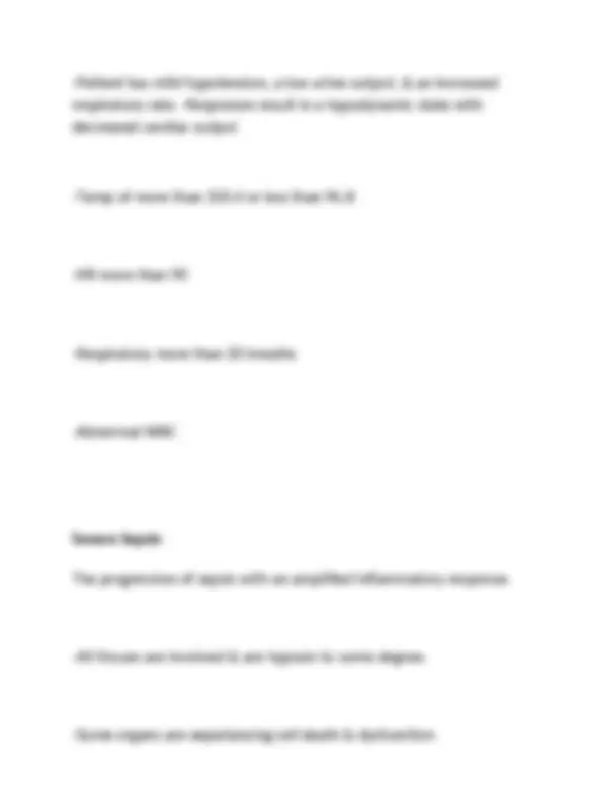

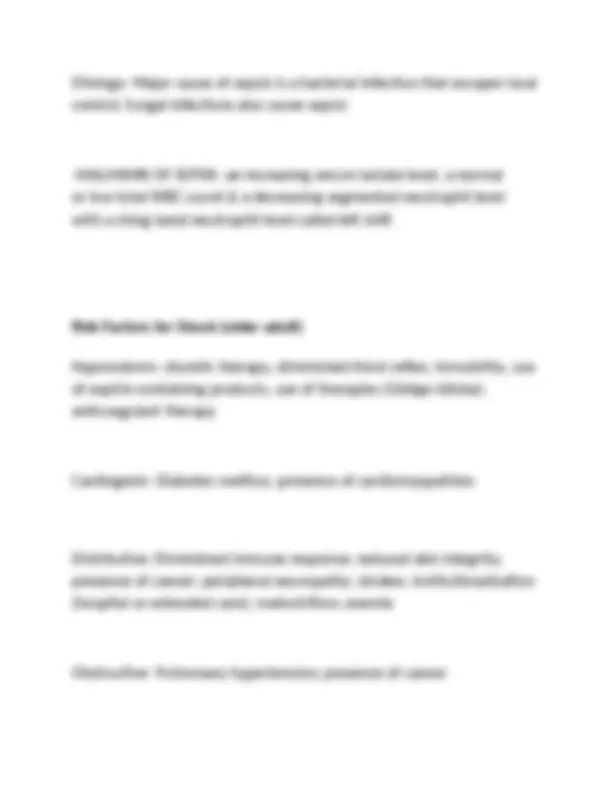
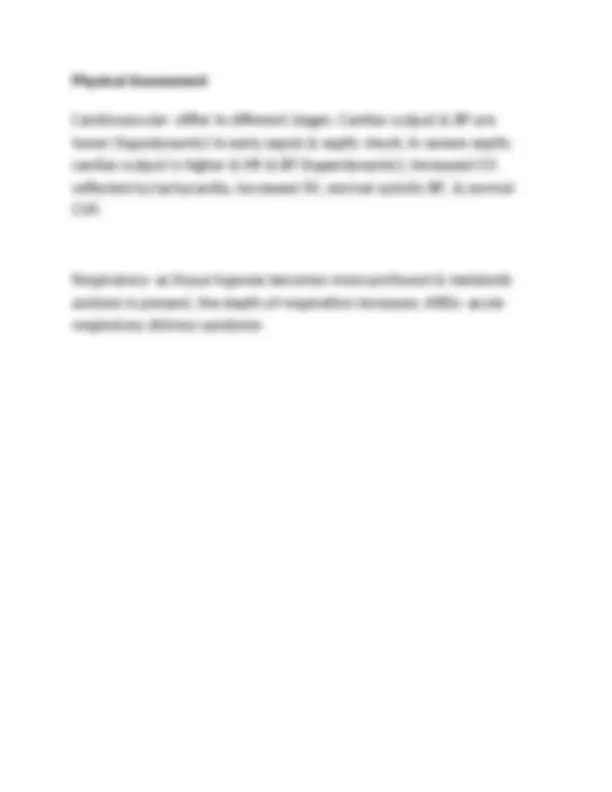
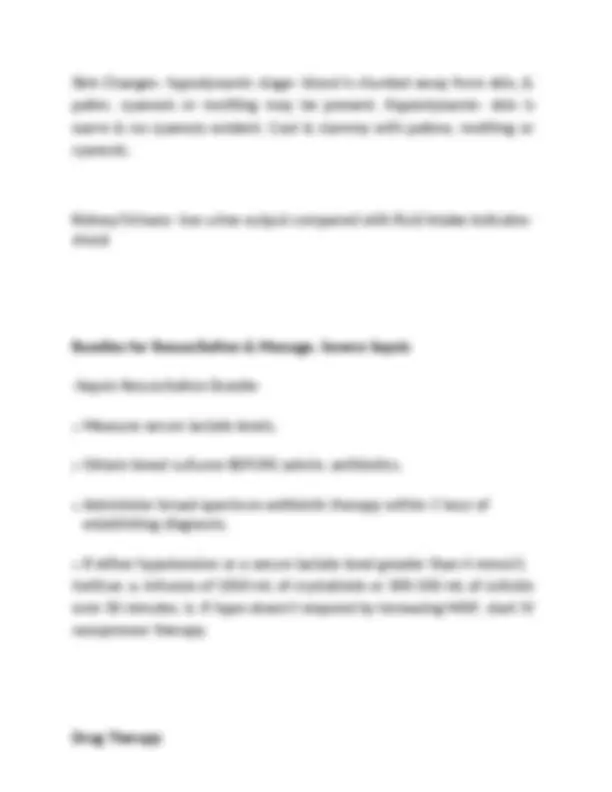
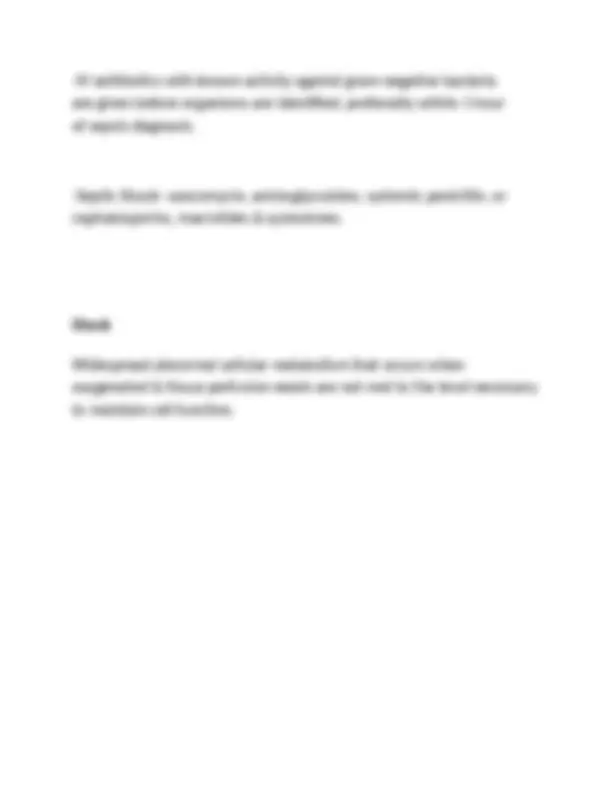
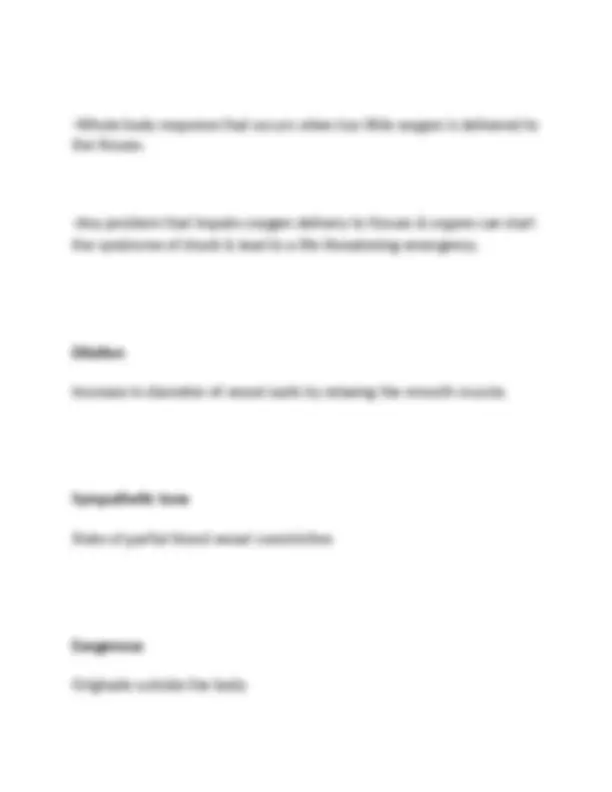
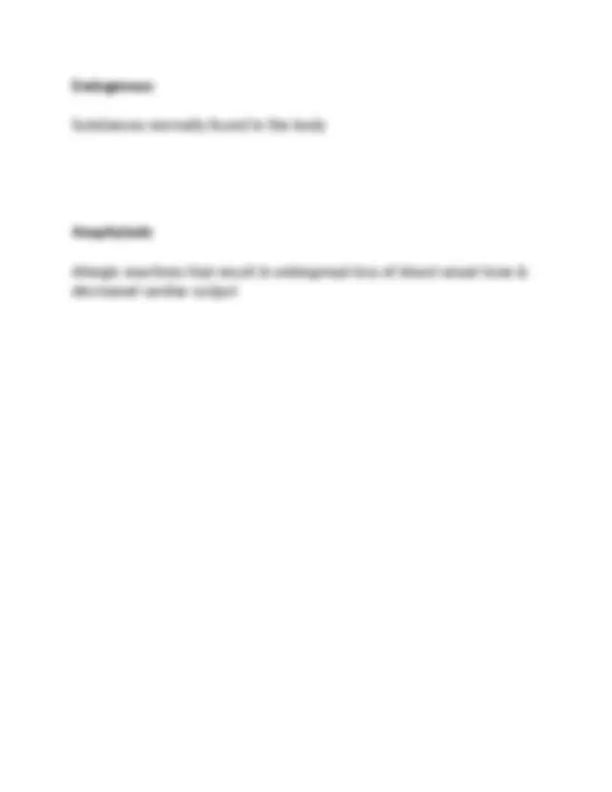
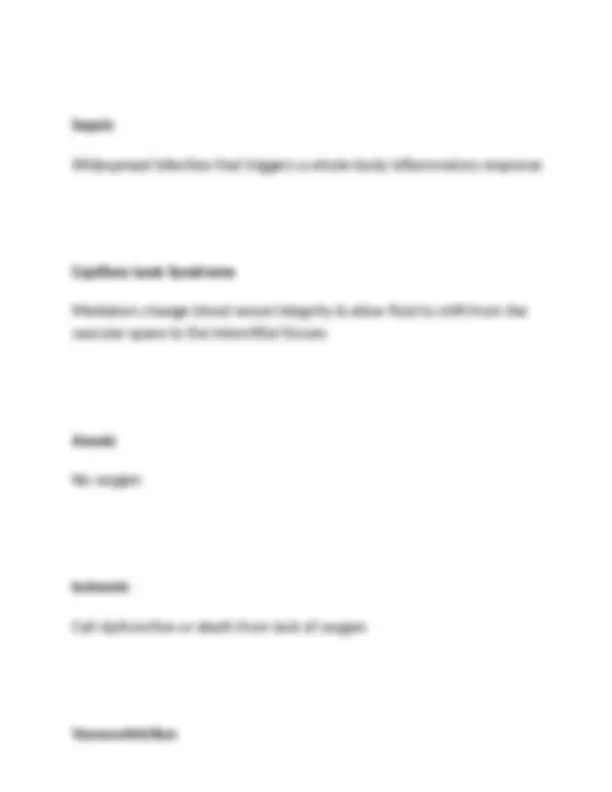
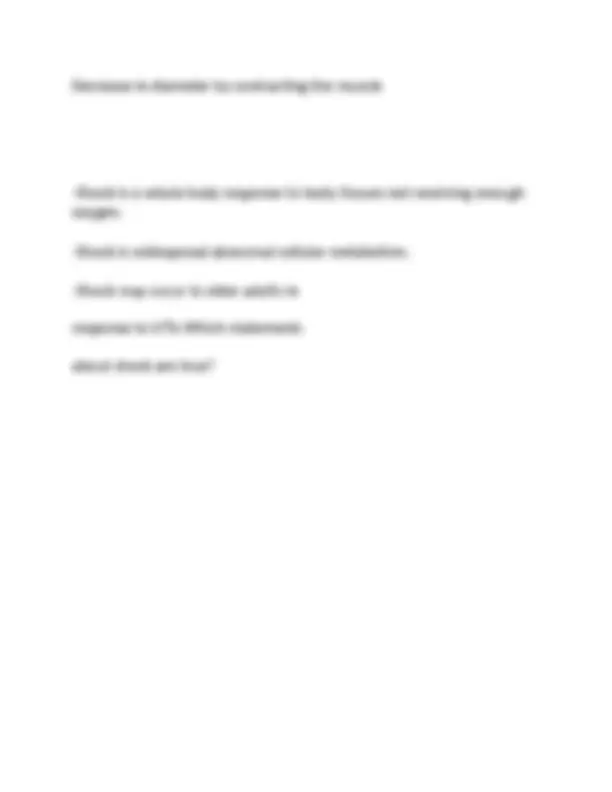
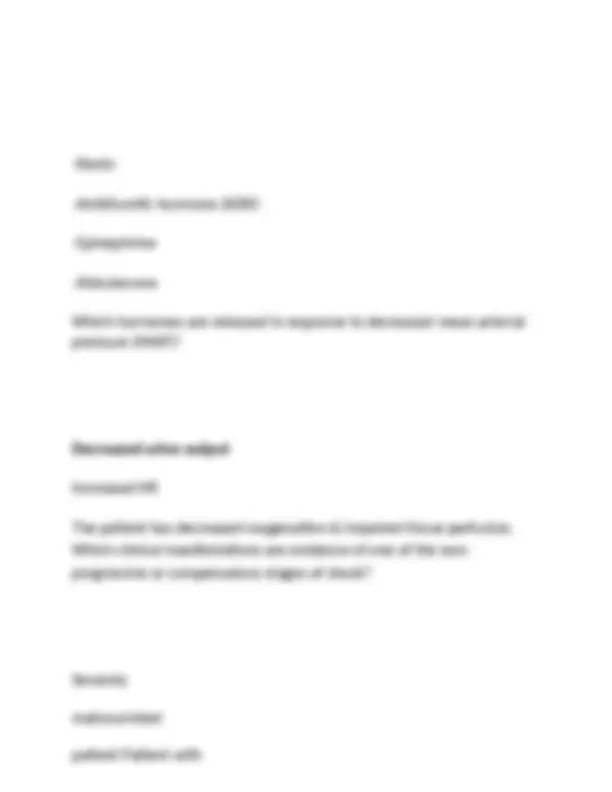
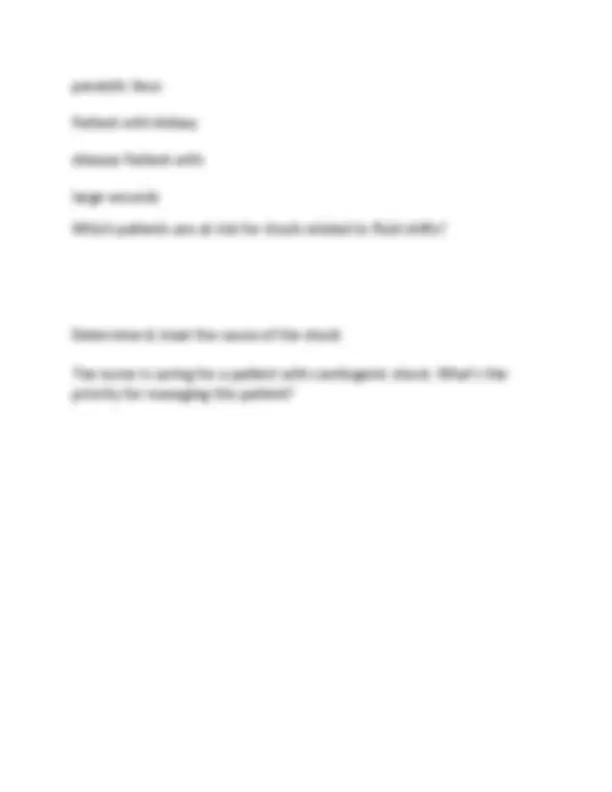
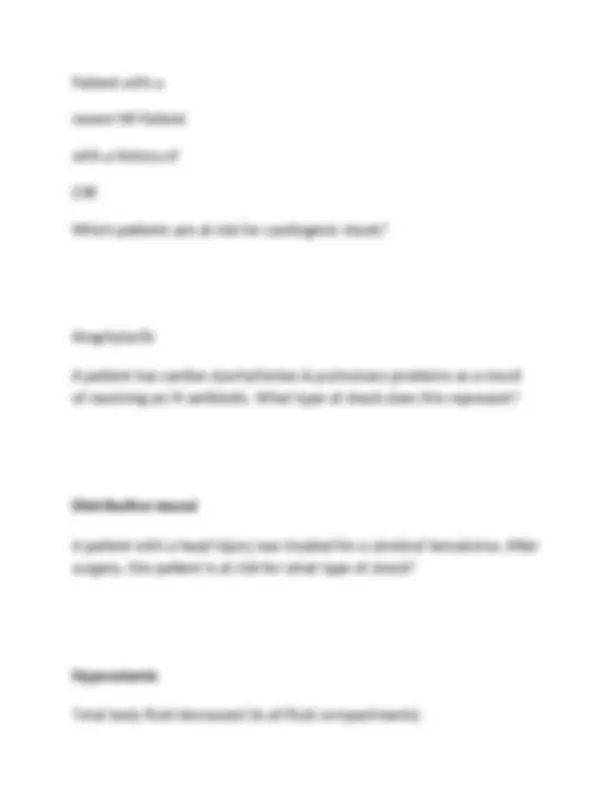
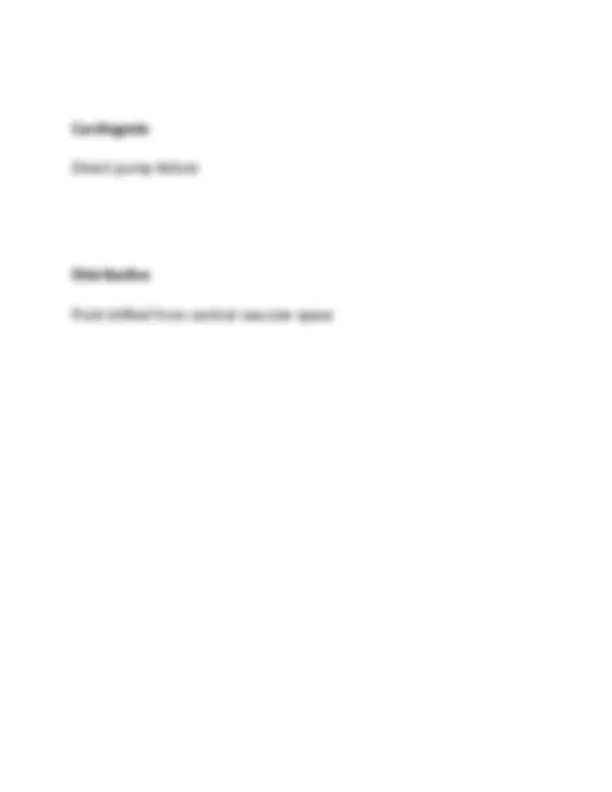

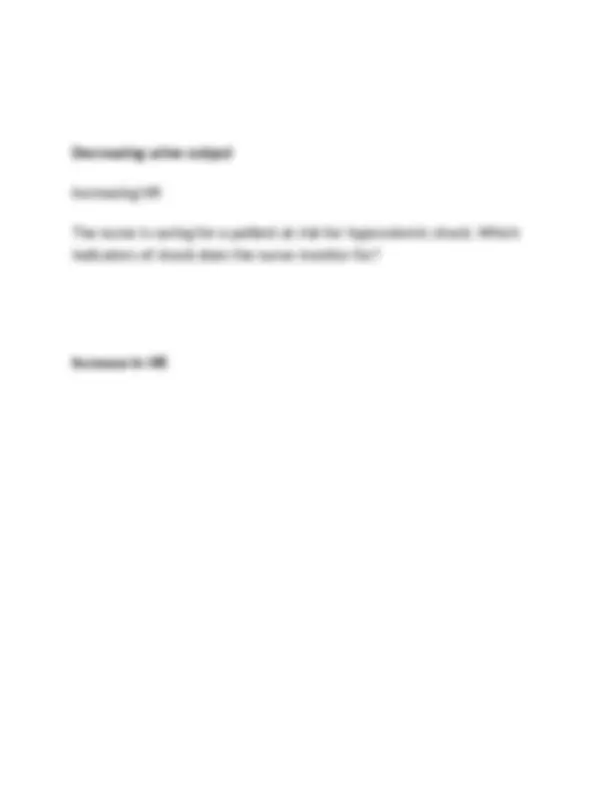
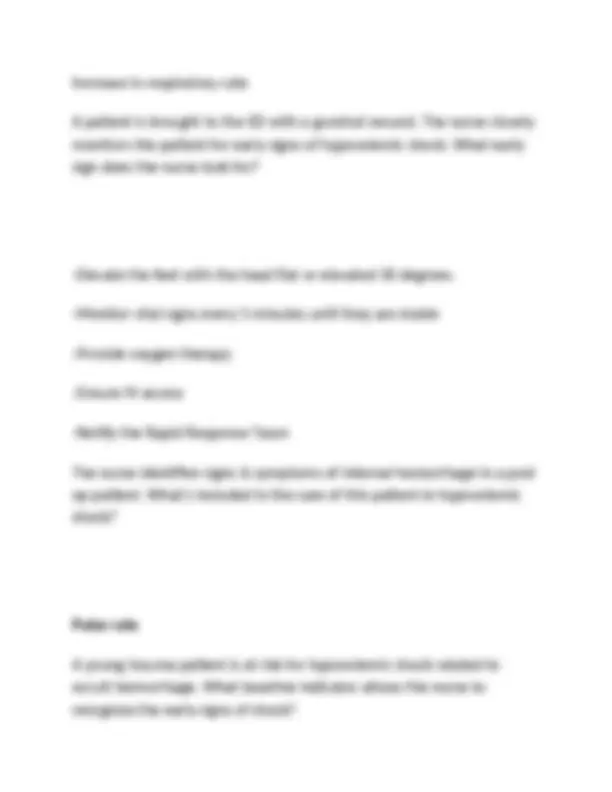
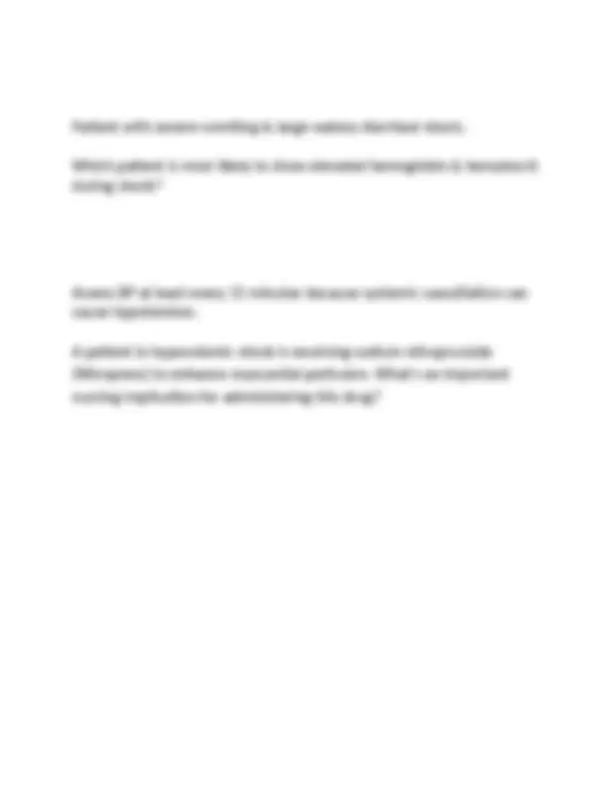
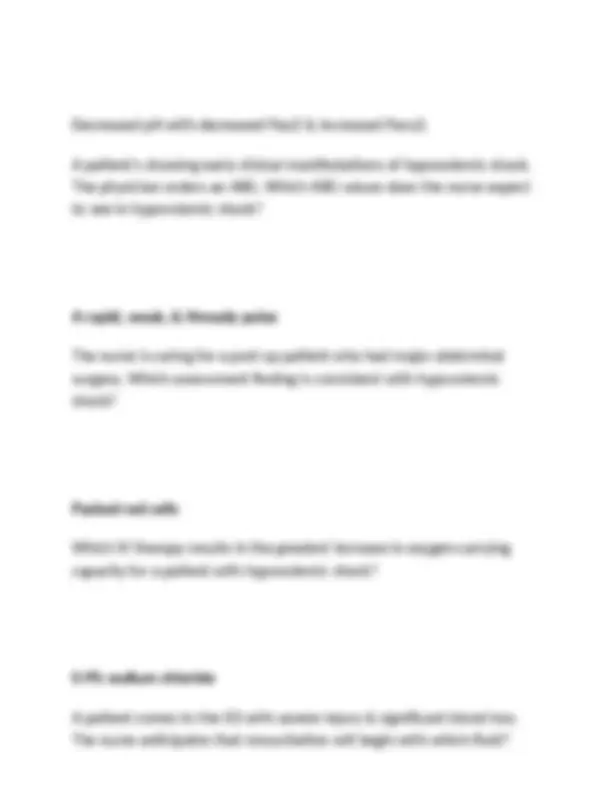
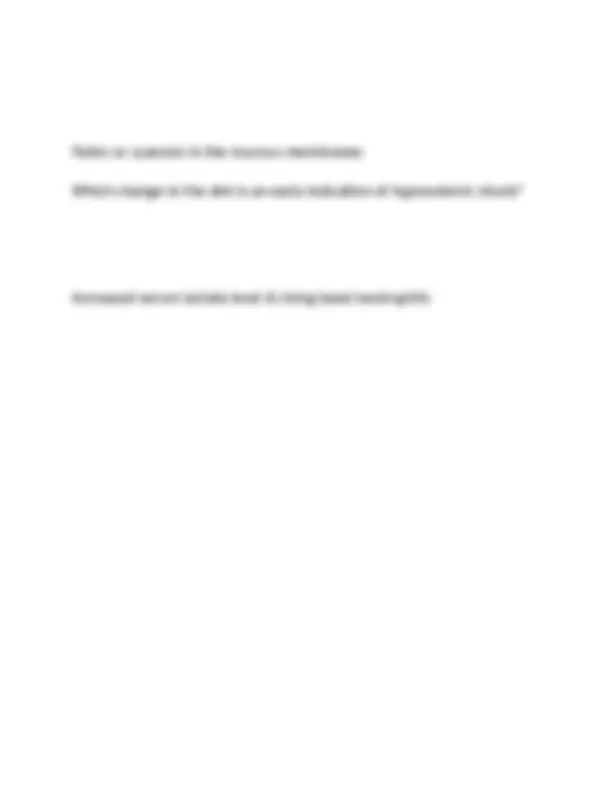
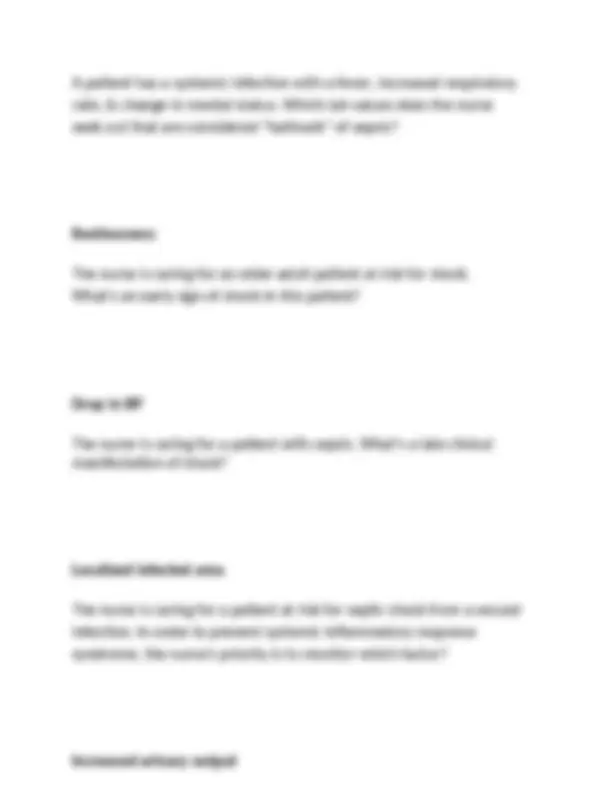
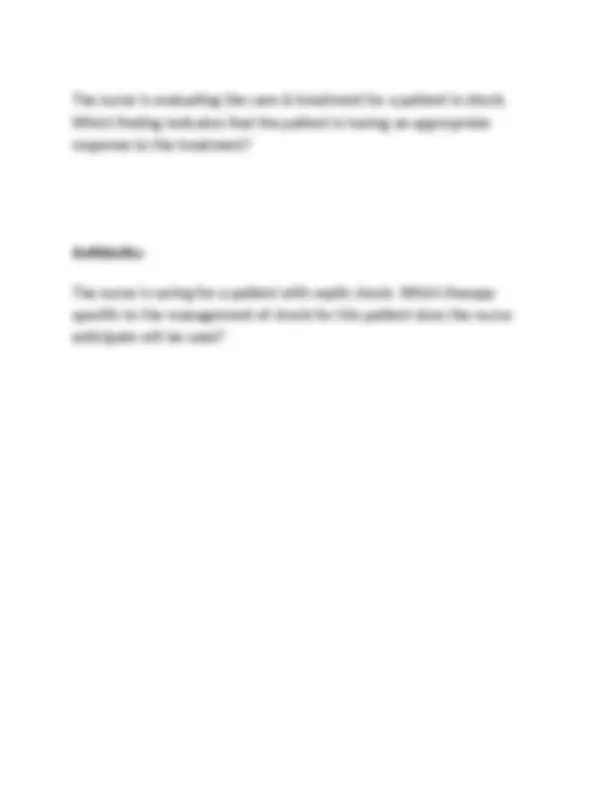
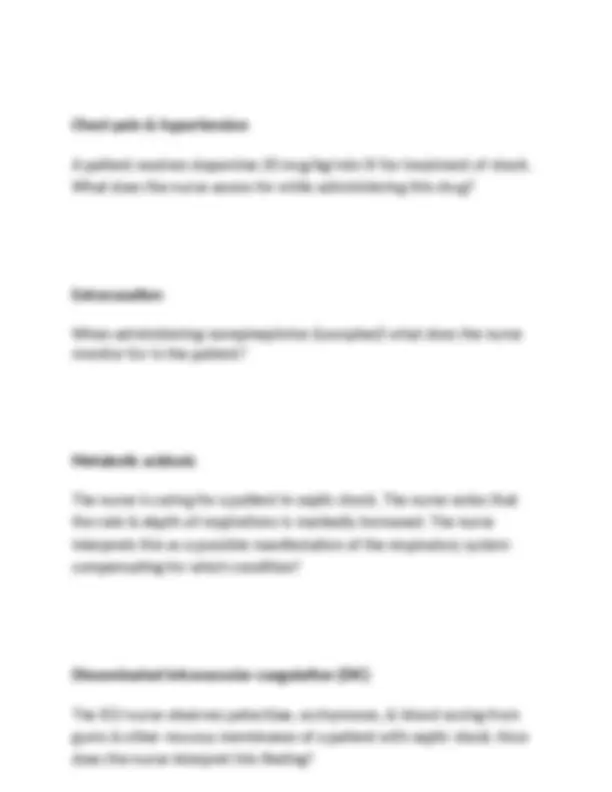
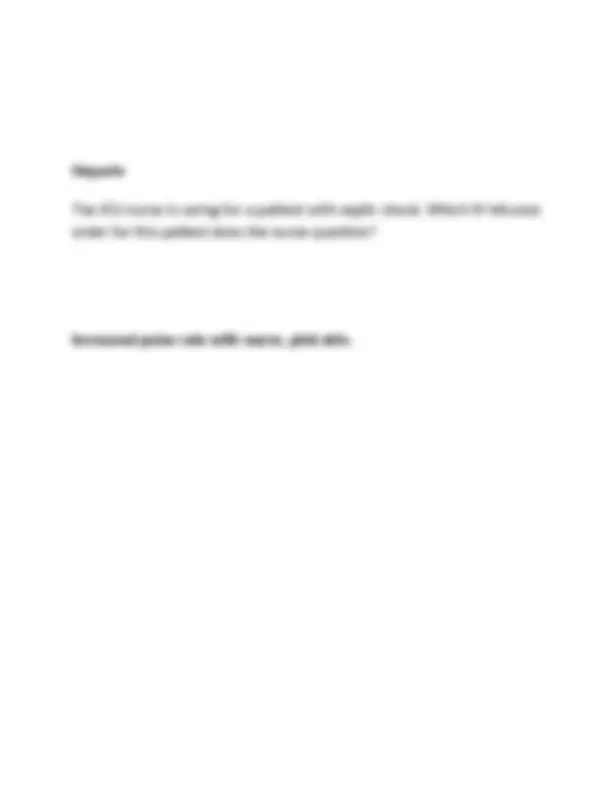
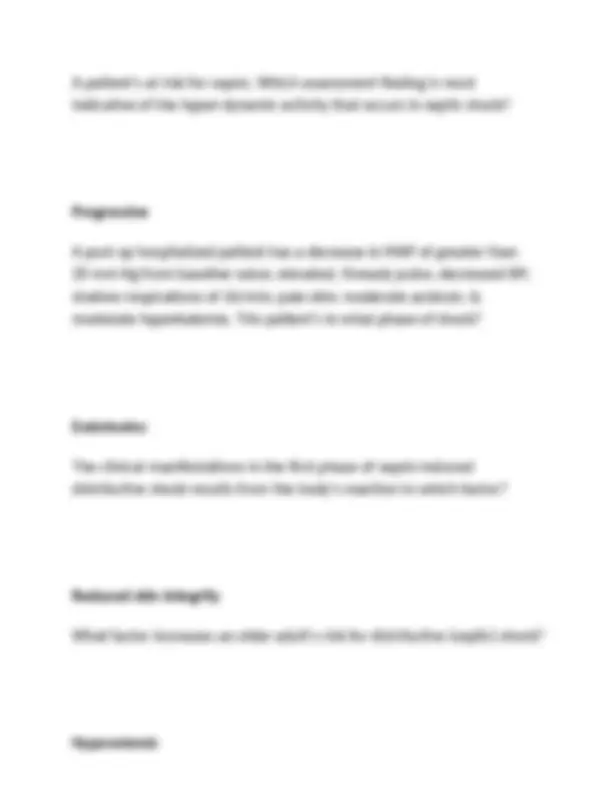
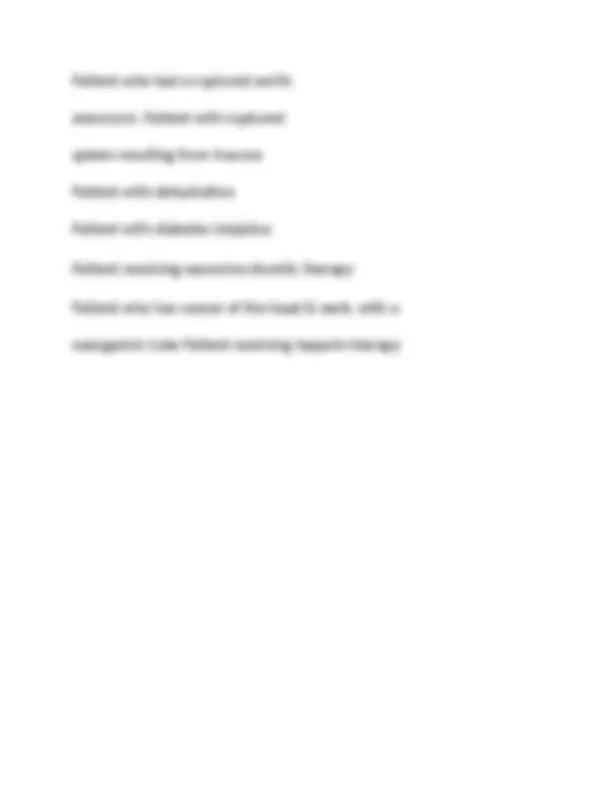
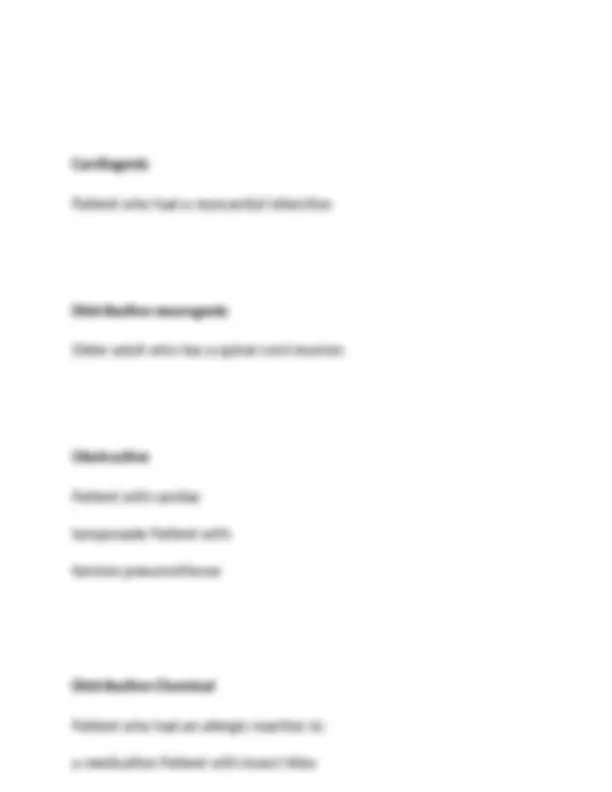
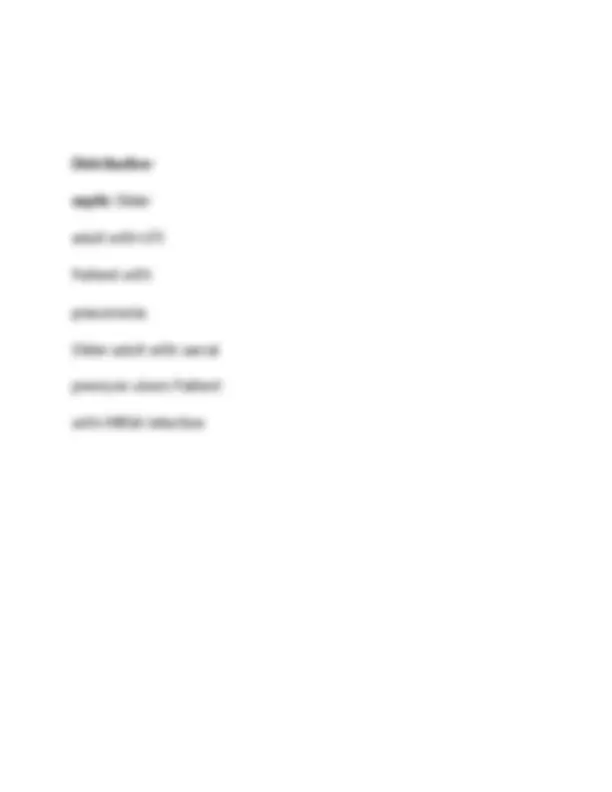
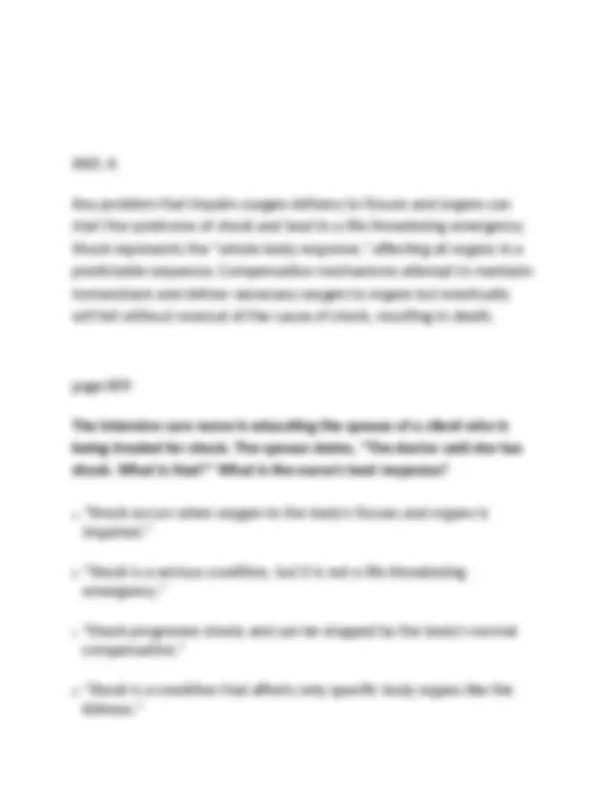
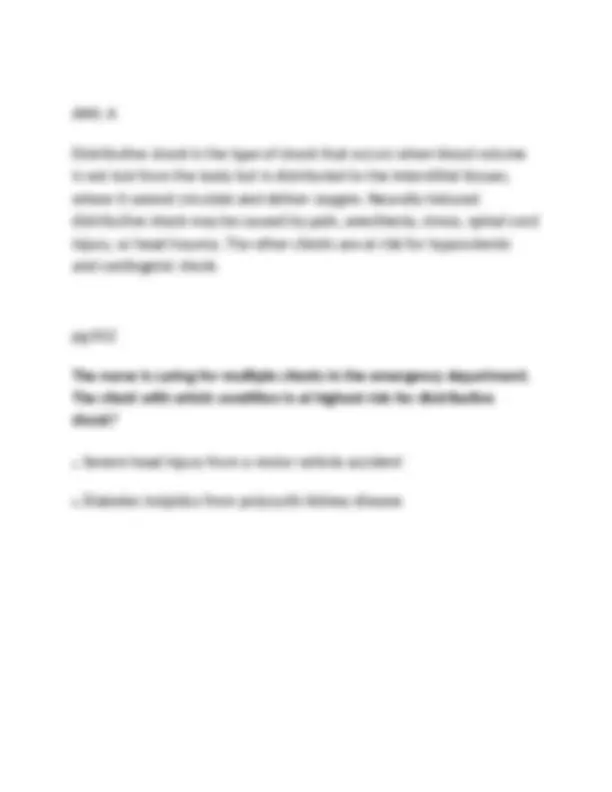
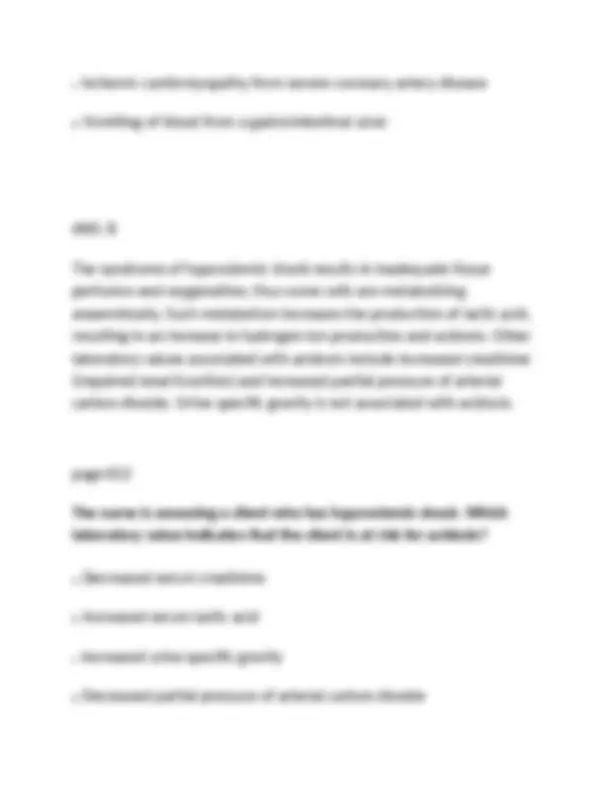
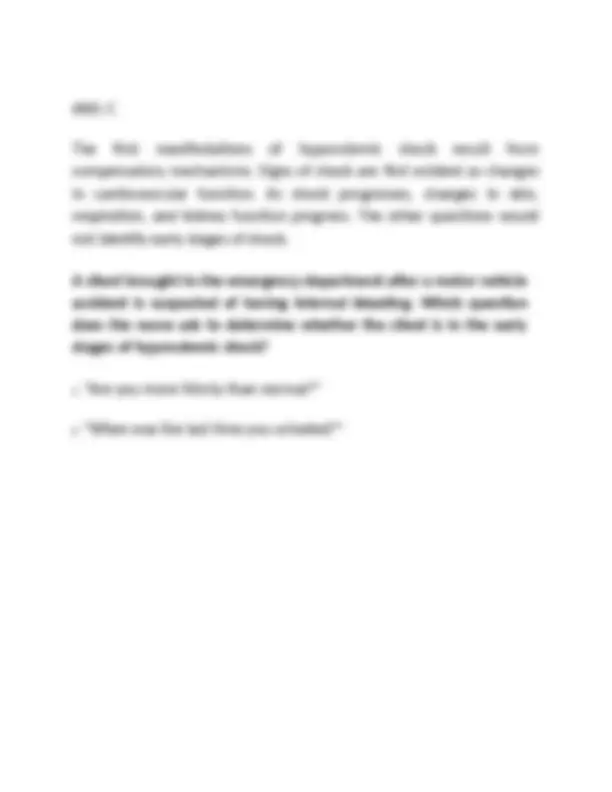
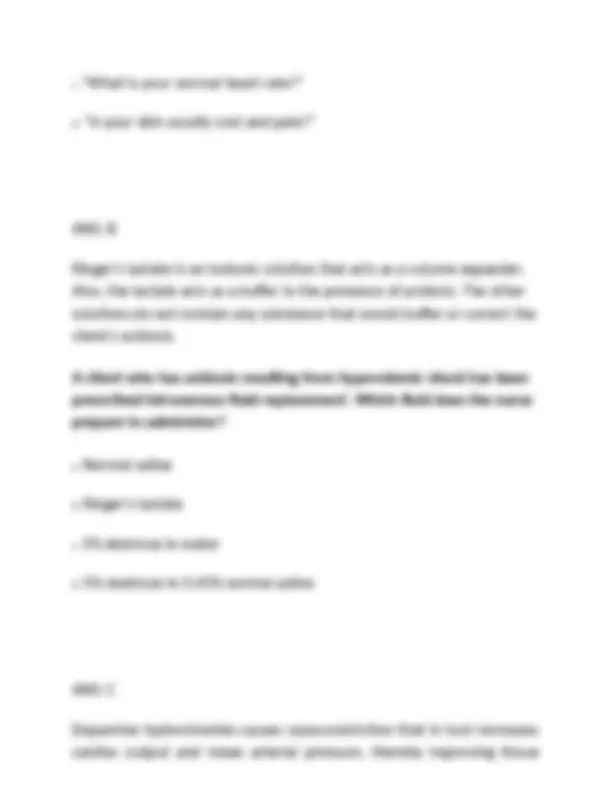
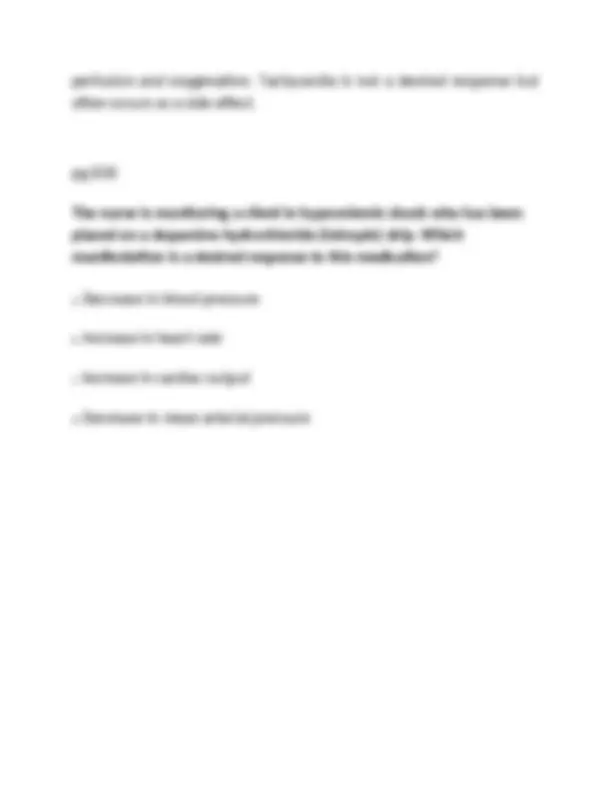
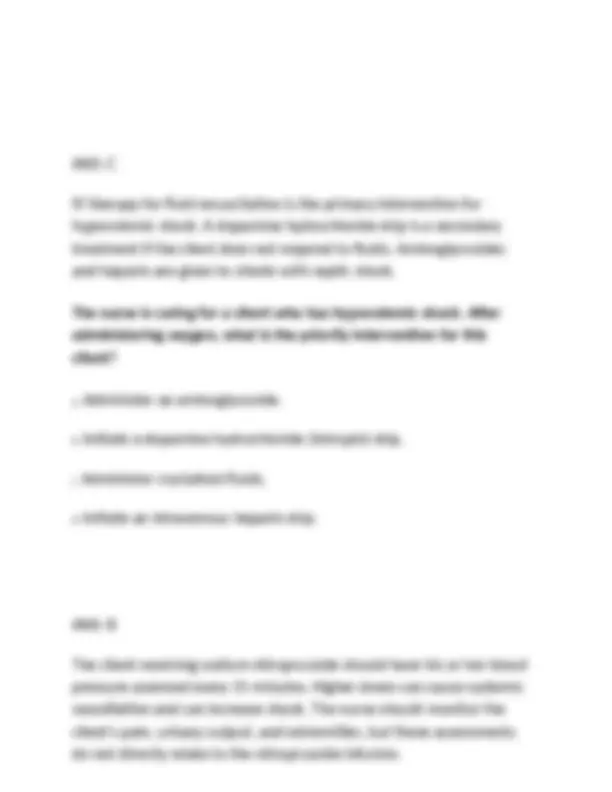
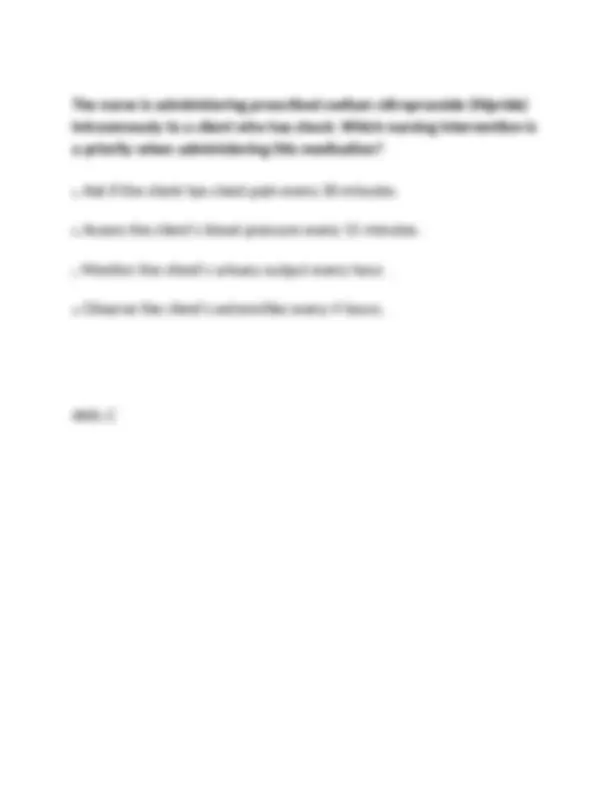
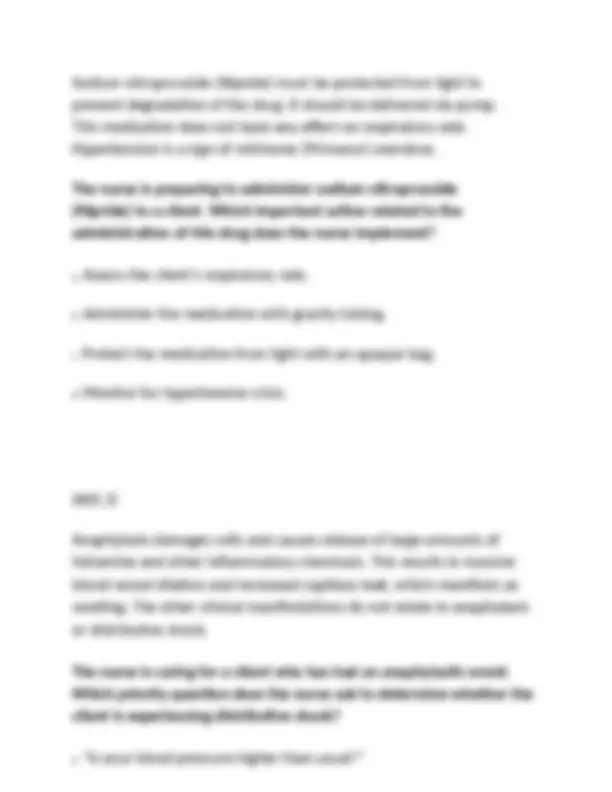
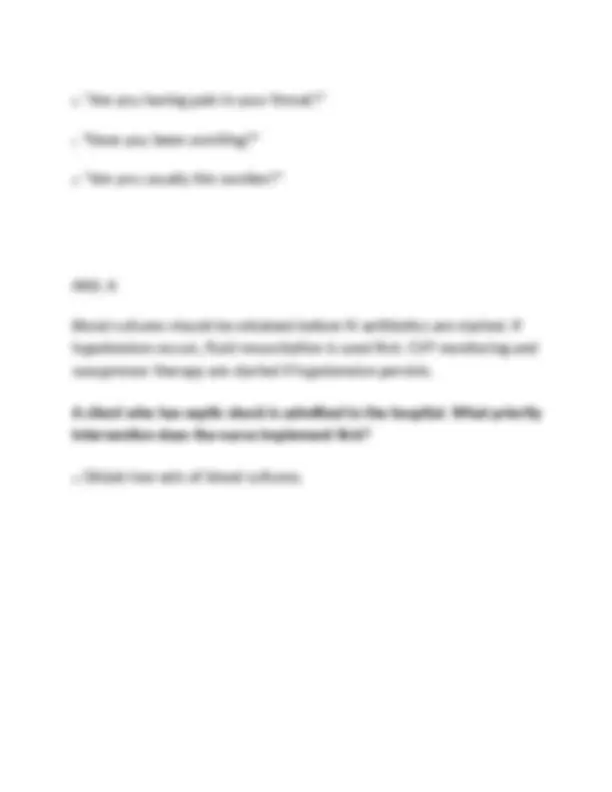
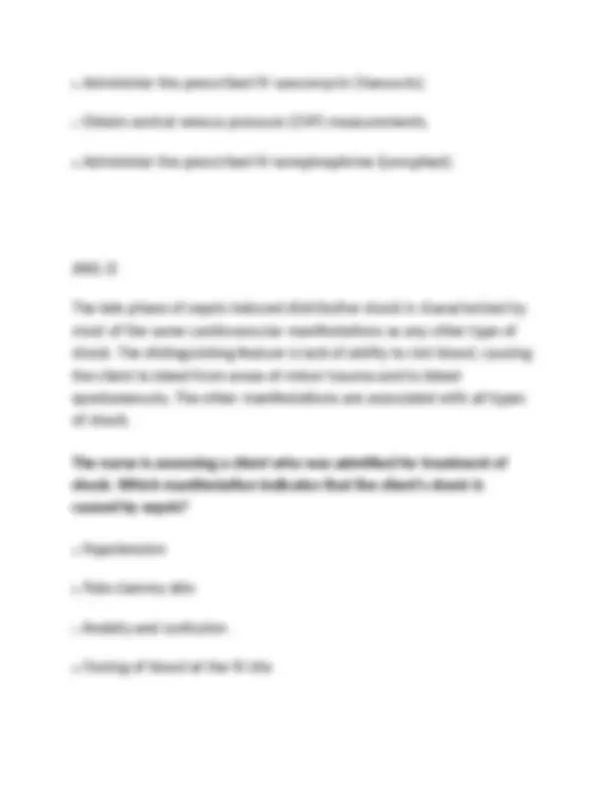
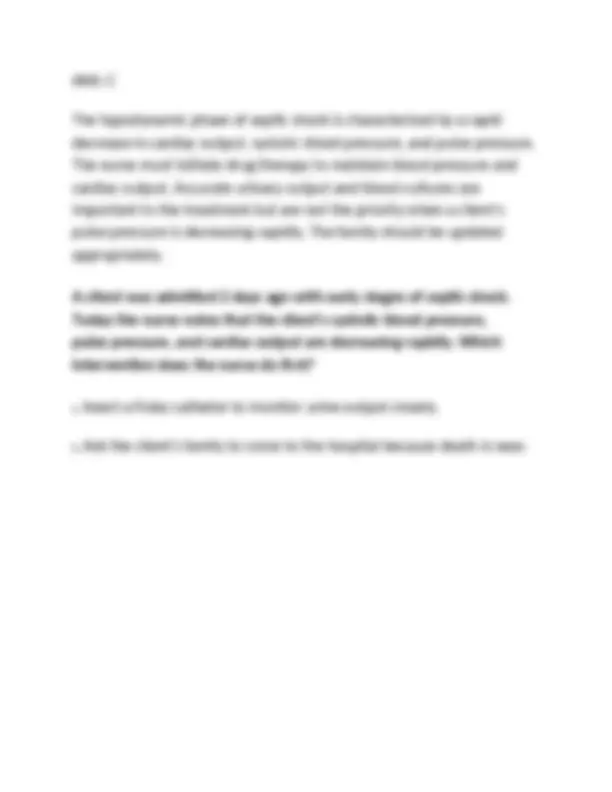
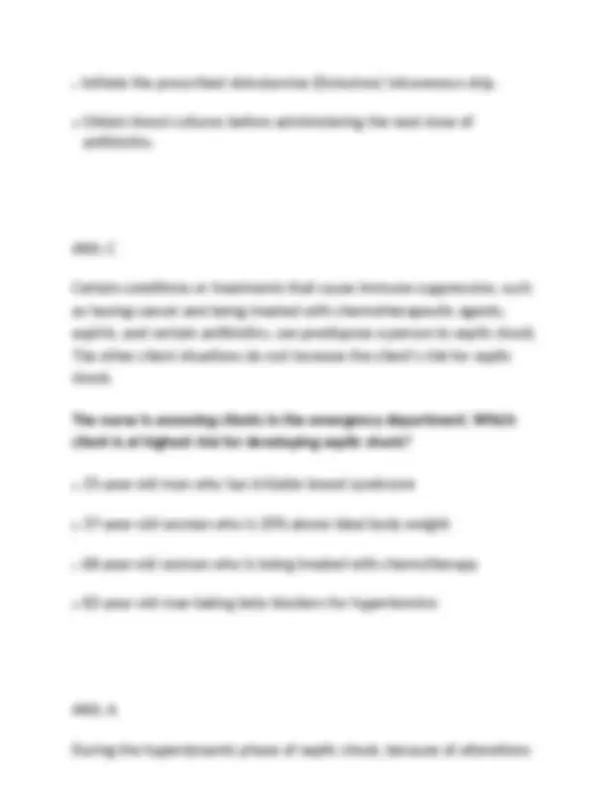
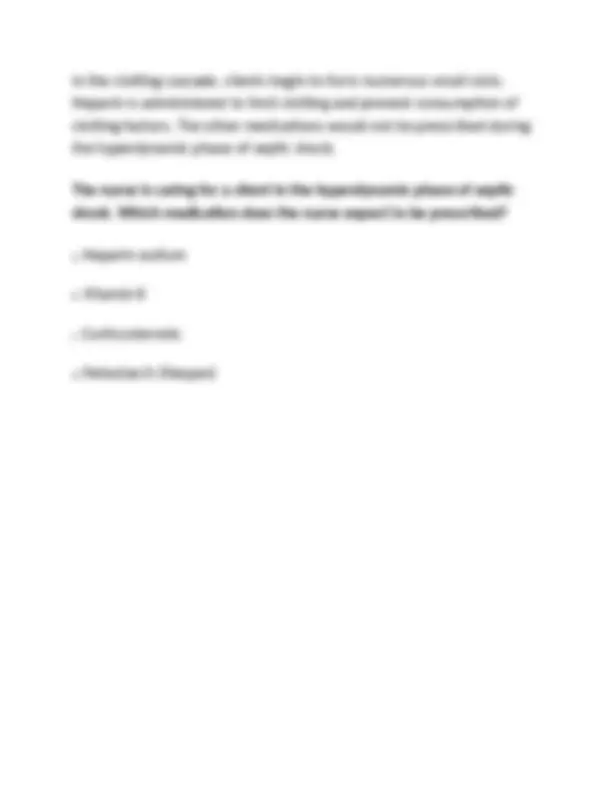
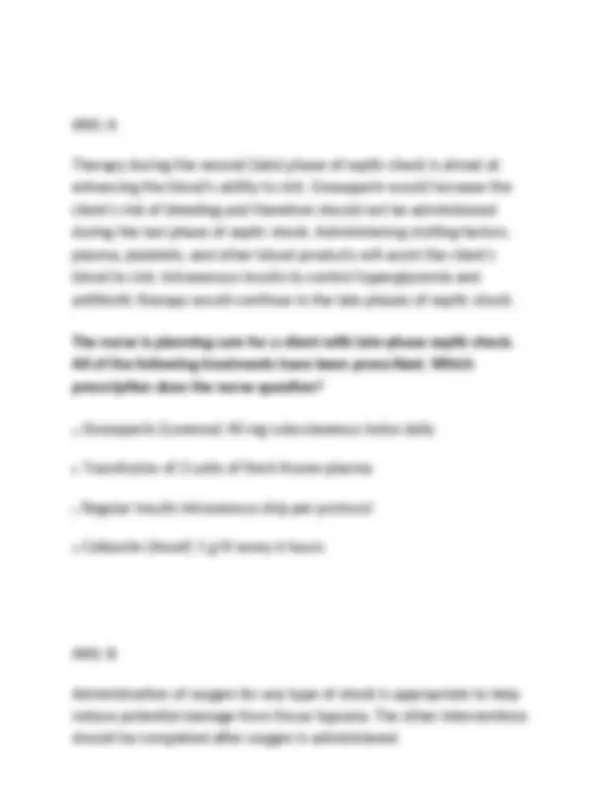
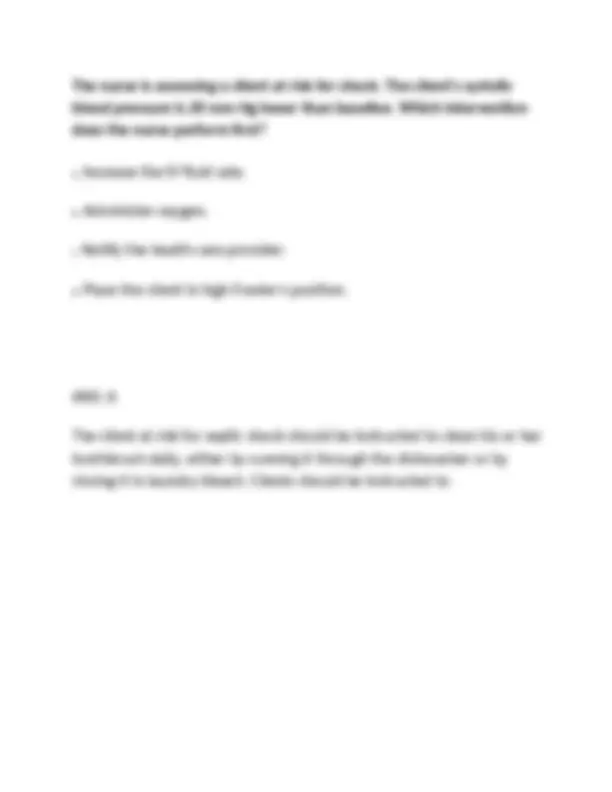
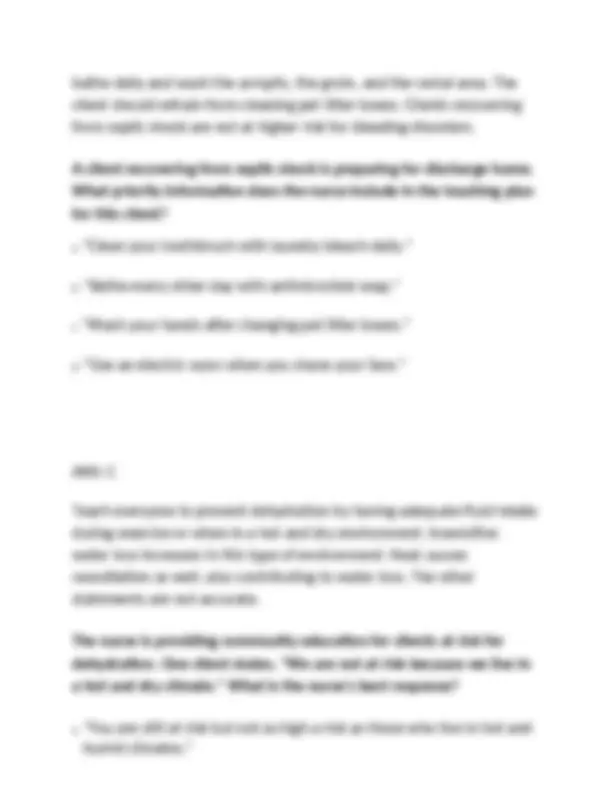
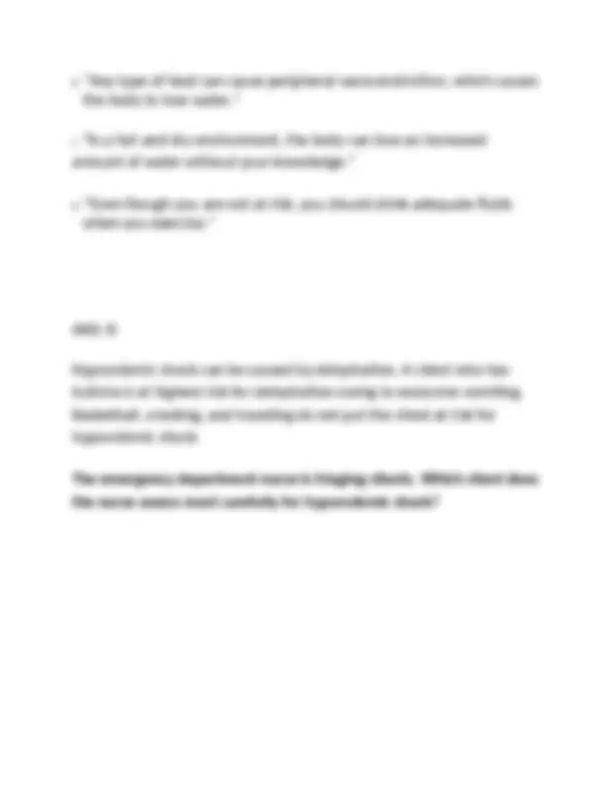
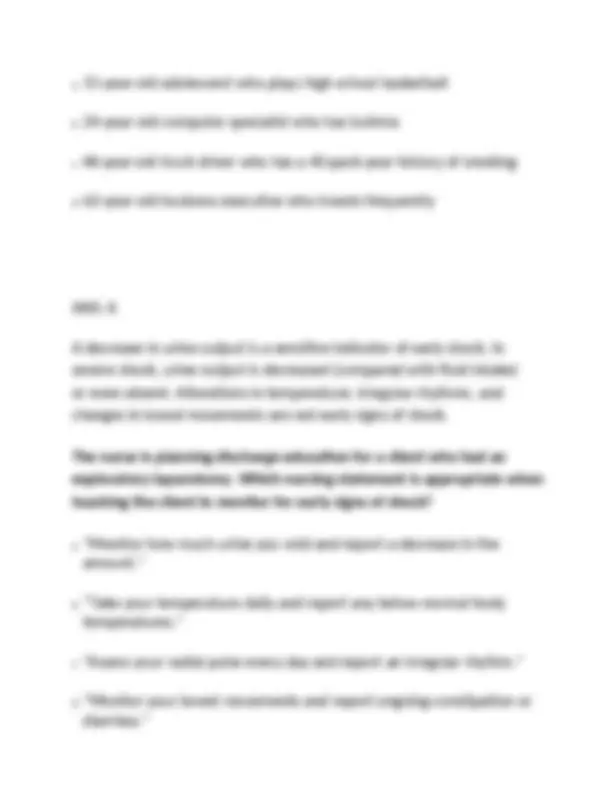
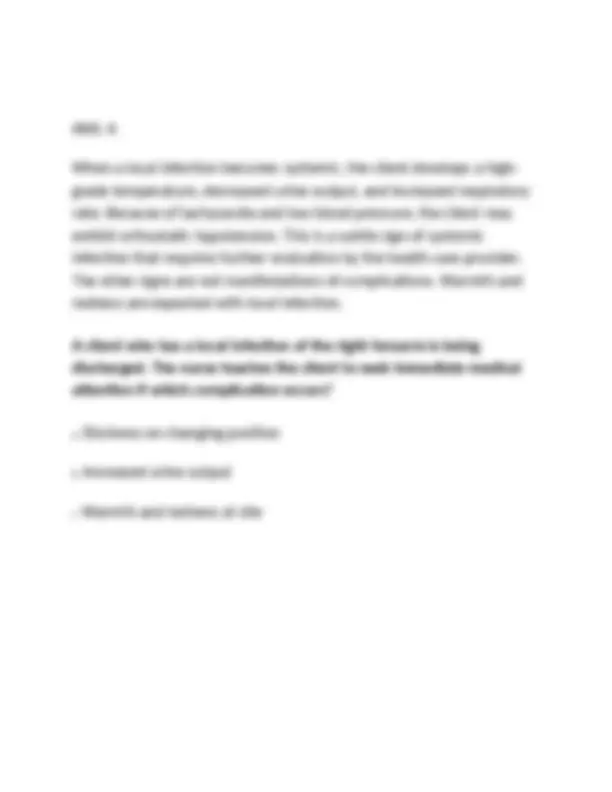
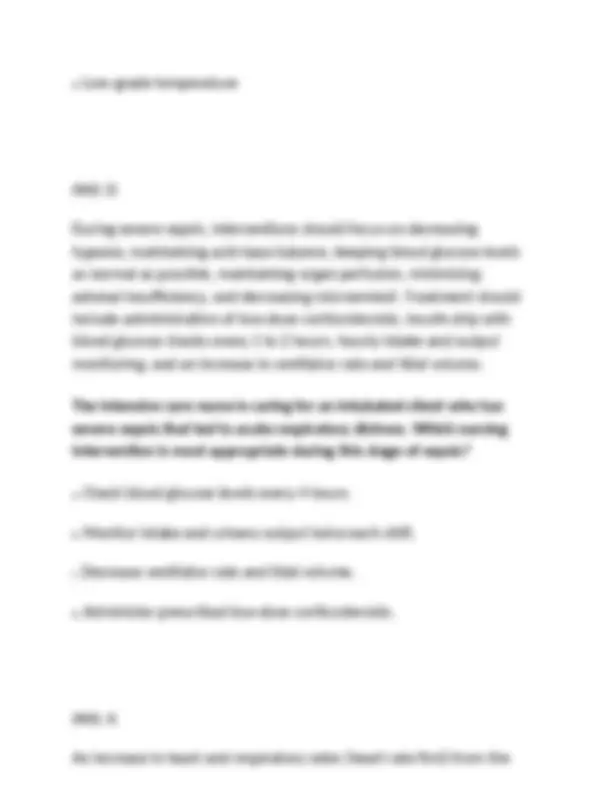
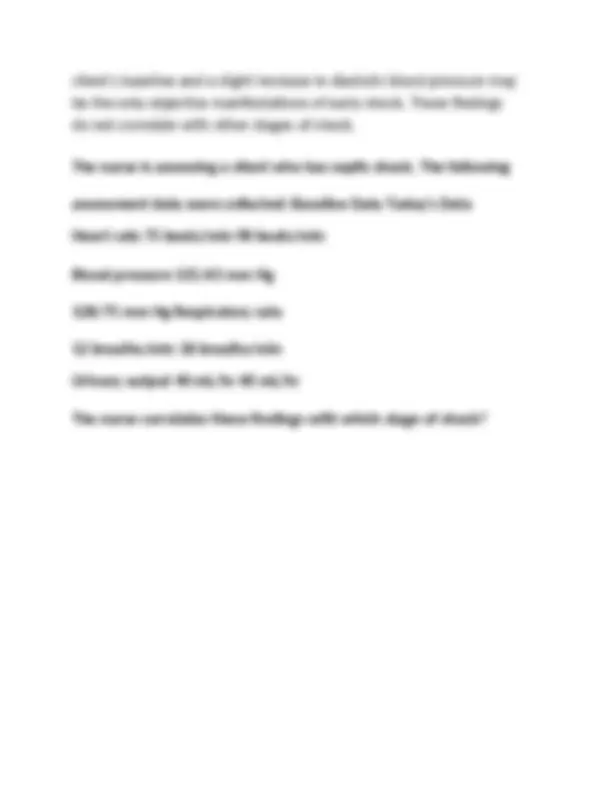
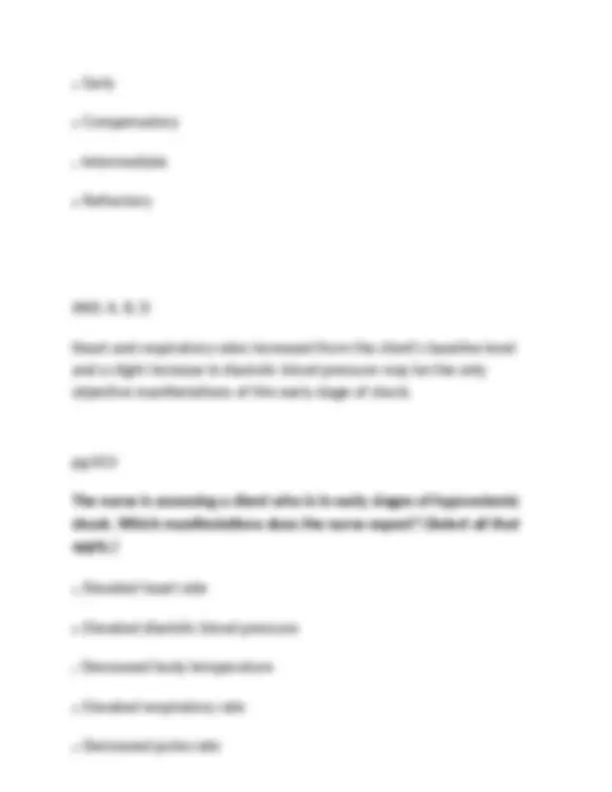
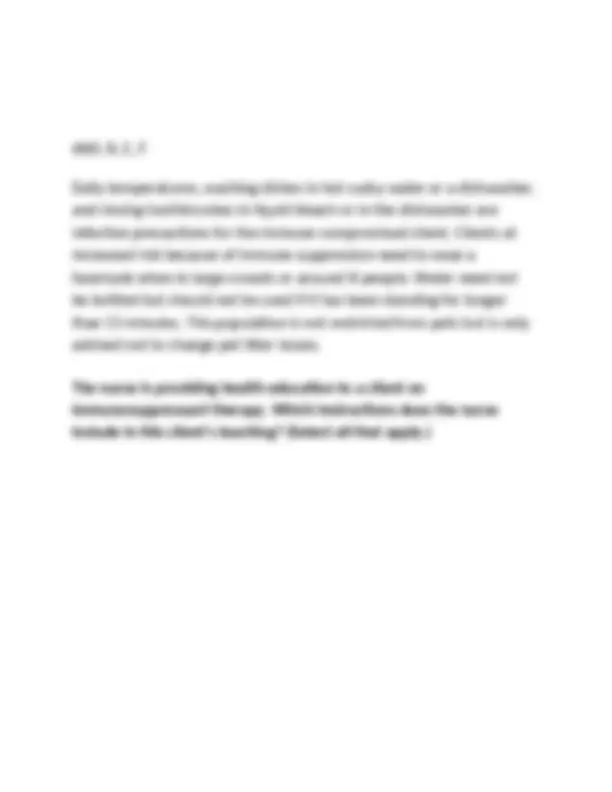
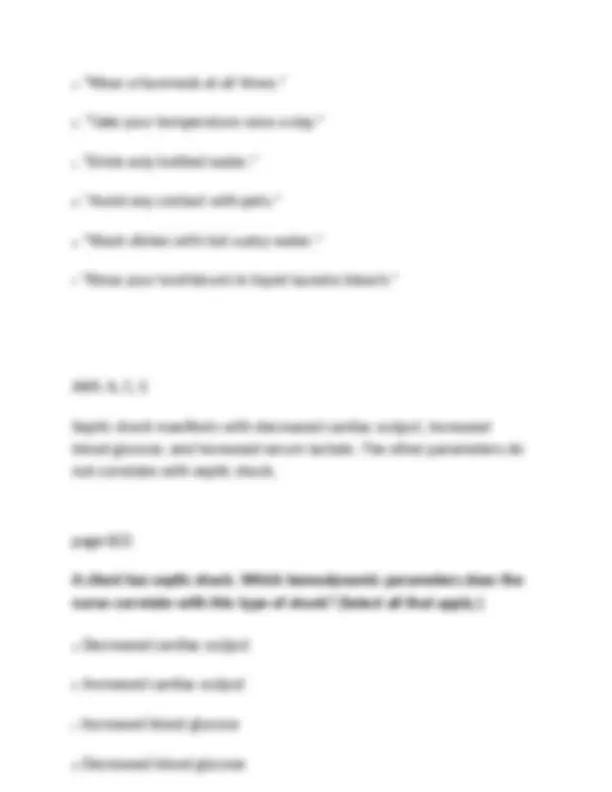
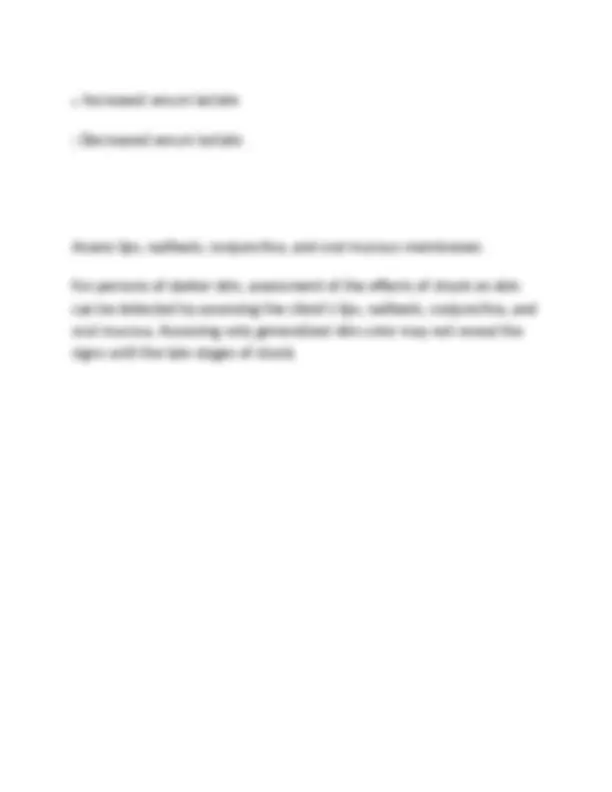
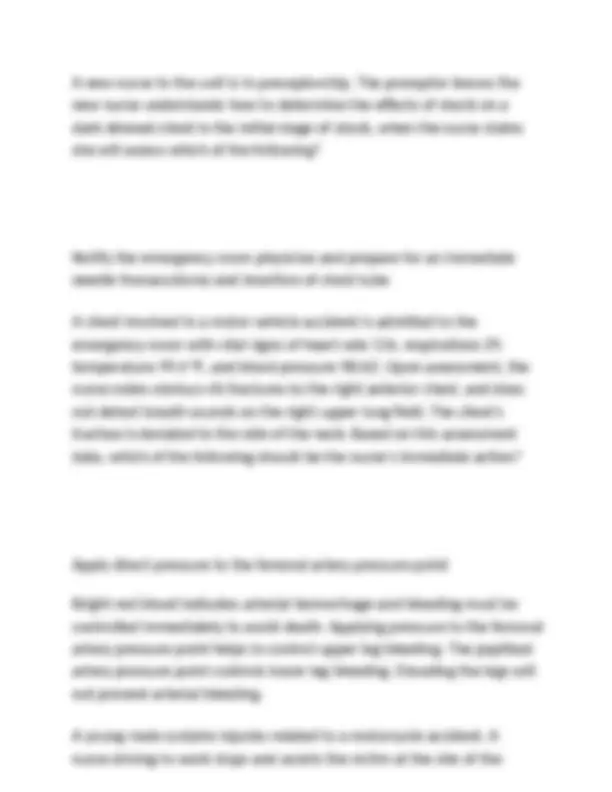
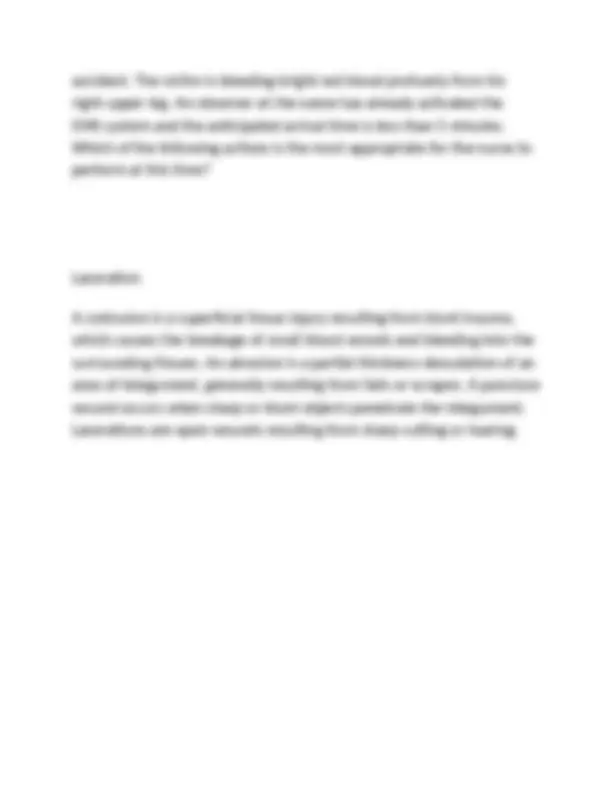
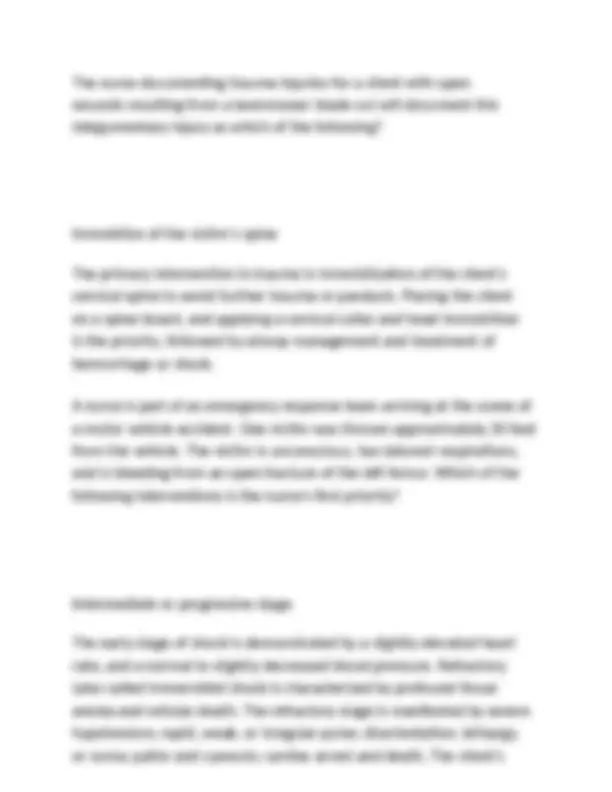
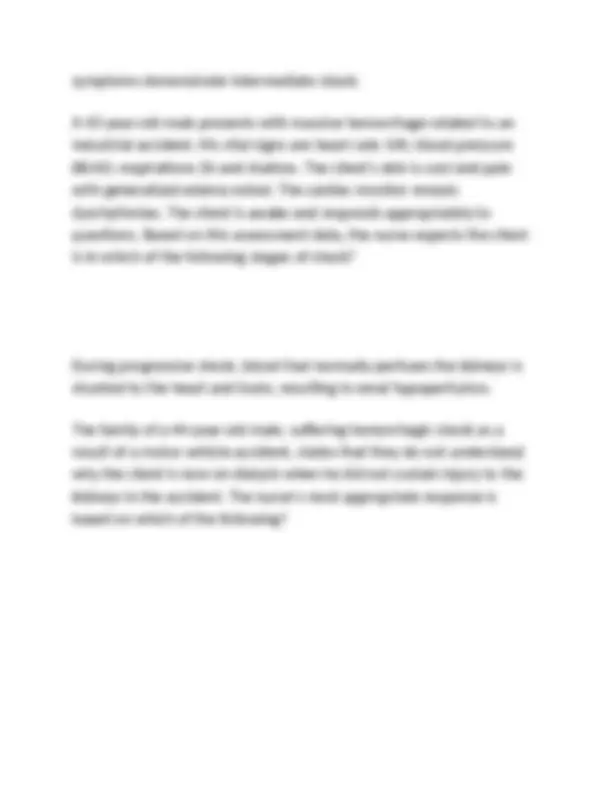
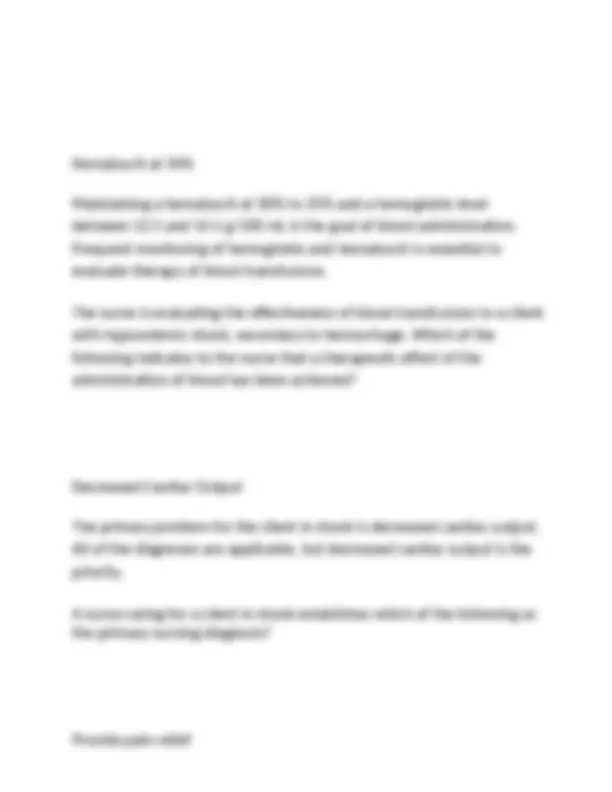
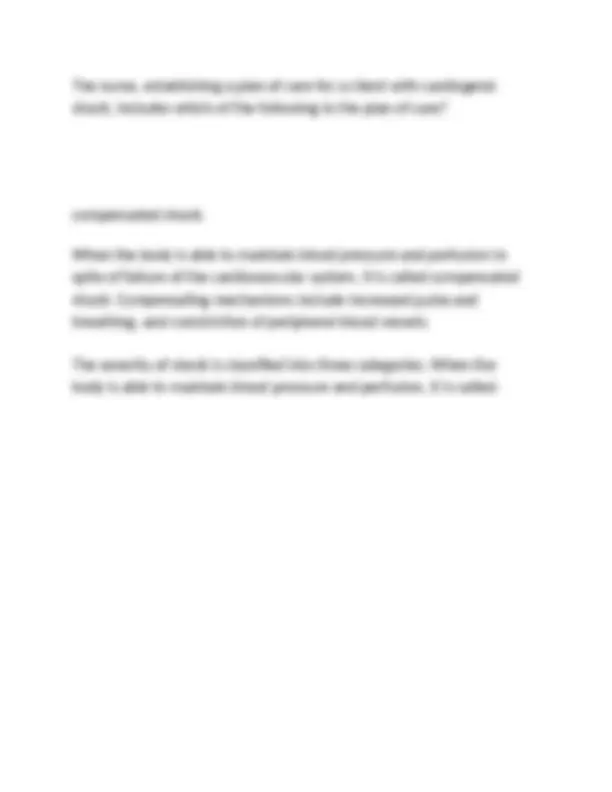
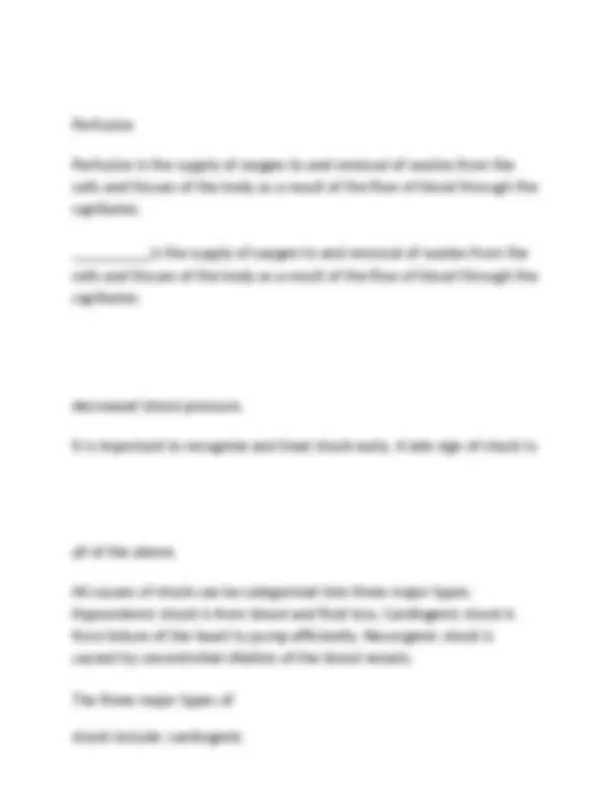
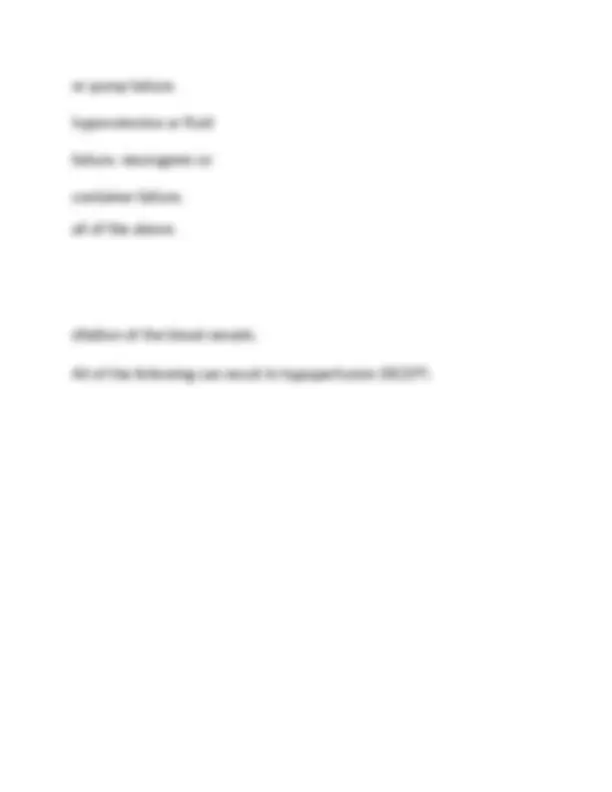
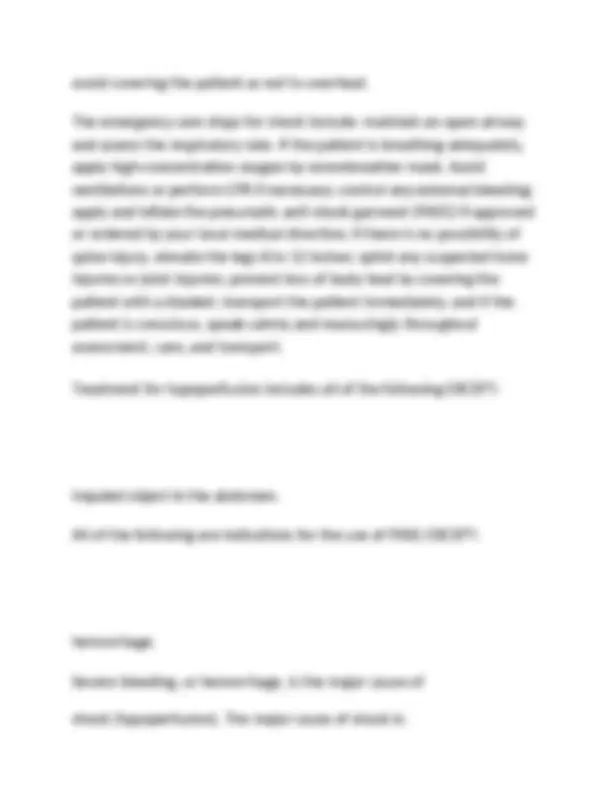
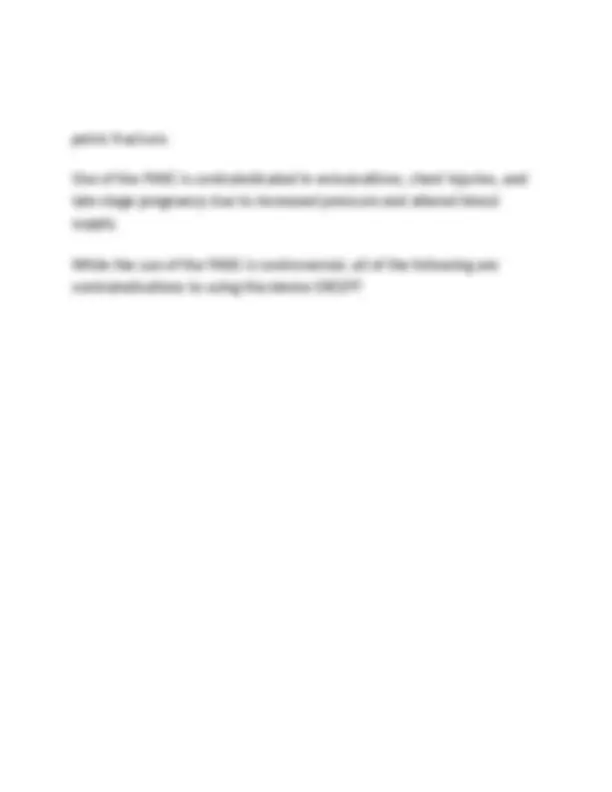


Study with the several resources on Docsity

Earn points by helping other students or get them with a premium plan


Prepare for your exams
Study with the several resources on Docsity

Earn points to download
Earn points by helping other students or get them with a premium plan
Community
Ask the community for help and clear up your study doubts
Discover the best universities in your country according to Docsity users
Free resources
Download our free guides on studying techniques, anxiety management strategies, and thesis advice from Docsity tutors
Health Assessment Exam1: Study Guide 2023
Typology: Exams
1 / 86

This page cannot be seen from the preview
Don't miss anything!















































































Review of oxygenation & tissue perfusion Oxygenation & perfusion depend on how much oxygen from arterial blood perfuses the tissue. Tissue & organ perfusion is related to mean arterial pressure (MAP) Causes & types of shock by functional impairment -Hypovolemic shock- Total body fluid decreased (in all fluid compartments) Specific Cause or risk factors- trauma, GI ulcer, surgery, inadequate clotting- hemophilia, liver disease, malnutrition, bone marrow suppression, cancer,anticoagulation therapy, diabetes insipidus, - Dehydration' hyperglycemia, vomiting, diarrhea, heavy diaphoresis, diuretic therapy, Nasogatric suction
INTEGUMENTARY- Cool to cold; pale to mottled to cyanotic; moist, clammy; mouth dry; pastelike coating presenting GASTROINTESTINAL- Decreased motility; diminished or absent bowel sounds; nausea & vomiting; constipation. TYPE OF SHOCKS- HYPOVOLEMIC
-occurs when too little circulating blood volume causes a MAP decrease, resulting in inadequate total body oxygenation- Reduced MAP slows blood flow resulting in decreased tissue perfusion. -Common problems leading: hemorrhage & dehydration CARDIOGENIC SHOCK Occurs when the actual heart muscle is unhealthy & pumping & is directly impaired. Myocardial infarction- most common cause of direct pump failure. DISTRIBUTIVE SHOCK Occurs when blood volume is not lost from the body but is distributed to the interstitial tissues where it can't circulate & deliver oxygen. Can be caused by loss of sympathetic tone, blood vessel dilation, pooling of blood in venous & capillary beds, & increased capillary leak.
-anaphylaxis- one result of type I allergic reactions. Result is widespread loss of blood vessel tone & decreased cardiac output. -Sepsis- widespread infection that triggers a whole body inflammatory response. Leads to distributive shock when infectious microorganisms are present in blood. -Capillary leak syndrome- The response of capillaries to the presence of biologic mediators that change blood vessel integrity & allow fluid to shift from the blood vessels into the interstitial tissues. One in tissue, fluids are stagnant & can't deliver oxygen or remove tissue waste products. -Occurs when certain body chemicals or foreign substances in the blood & vessels start widespread changes in blood vessel walls. -Problems causing fluid shift: severe burns, liver disorders, ascites, peritonitis, paralytic ileus, severe malnutrition, large wounds. OBSTRUCTIVE SHOCK Caused by problems that impair the ability of the normal heart muscle to pump effectively. The heart itself remains normal, but conditions outside the heart prevent either adequate filling of the heart or adequate contraction of the healthy heart muscle.
-Most common causes: pericarditis & cardiac tamponade Adaptive Responses & Events During Hypovolemic INITIAL STAGE- Decrease in baseline MAP of 5-10. Increased sympathetic stimulation- mild vasoconstriction; increased HR. NONPROGRESSIVE STAGE- Decrease in MAP of 10-15 from patient's baseline value. Continued sympathetic stimulation- moderate vasoconstriction; increased HR; decreased pulse pressure; Chemical compensation- renin aldosterone & antidiuretic hormone secretion, increased vasoconstriction;
the release of renin, antidiuretic hormone (ADH), aldosterone, epinephrine, & norepinephrine to start kidney compensation. -ADH increases water reabsorption in the kidney, further reducing urine output, & also causes blood vessel constriction in the skin & other less vital tissue areas. -Tissue hypoxia occurs in nonvital organs (skin, GI tract) & in the kidney but it's not great enough to cause permanent damage. -Changes include acidosis (low blood pH) & hyperkalemia (increased blood potassium level). Subjective changes include : thirst & anxiety, objective changes include restlessness, tachycardia, increased respiratory rate, decreased urine output, falling systolic BP, rising diastolic BP, narrowing pulse pressure, cool extremities, & a 2%-5% decrease in oxygen saturation measured by pulse ox. Can remain in stage for hours.
Etiology Hypovolemic shock occurs when too little circulating blood volume causes a MAP decrease that prevents total body oxygenation. -Problems: hemorrhage (external or internal) & dehydrration Assessment Age is important- Hypovolemic shock from trauma is more common in young adults & other types of shock- more common in older adults. -Information about urine output is especially important because urine output is reduced during the first stages of shock even when fluid intake is normal. Physical Assessment/ Clinical Manifestation Most manifestations of hypovolemic shock are caused by the changes resulting from compensatory efforts. -Compensatory mechanisms : are physiologic responses that try to keep an adequate blood flow to vital organs.
-Cardiovascular changes- start with decreased MAP, leading to compensatory responses. Earliest sign!!! Pulse rate increases to keep cardiac output & MAP at normal levels, even though the actual stroke volume per beat is decreased. Increased HR- earliest manifestation of shock! Peripheral pulses difficult to palpate & are blocked with light pressure. -Systolic pressure decreases as shock progresses & cardiac output decreases. -Pulse ox- 90-95%- nonprogressive stage of shock; 75-80% - progressive stage of shock.
Pao2- 80-100 mm Hg- Decreased: anaerobic metabolism Paco2- 35-45 mm Hg- Increased; anaerobic metabolism Lactic Acid (arterial) 3-7 mg/dL (0.3-0.8 mmol/L) Increased: anaerobic metabolism with build up of metabolites
Hematocrit- Females- 37%-47%- Males- 12-52%- Increased: fluid shift; dehydration; Decreased: hemorrhage Hemoglobin- Female- 12-16 g/dL- Male- 14-18 g/dL- Increased fluid shift; dehydration; Decreased: hemorrhage Potassium- 3.5-5.0 mEq/L- Increased: dehydration; acidosis Patient in Hypovolemic Shock! Patent Airway IV catheter, or maintain an established one Administer oxygen Elevate patient's feet, keeping head flat or elevated to no more than 30 degree angle Examine for overt bleeding If overt bleeding, apply direct pressure Drugs are prescribed Increase rate of IV
Colloids- large molecules (usually protein or starches)- protein containing-helps restore osmotic pressure & fluid volume Plasma- a cellular blood product containing clotting factors, is given to restore osmotic pressure when hematocrit & hemoglobin levels are within normal ranges. Drug Therapy -Used when the volume lost is severe & the patient doesn't respond sufficiently to fluid replacement & blood products. -Actions of drugs for shock increase venous return, improve cardiac contractility, or improve cardiac perfusion by dilating the coronary vessels. -Vasoconstricting drugs stimulate venous return by constricting blood vessels & decreasing venous pooling. Increase cardiac output, MAP, which help improve perfusion & oxygenation. dopamine (Intropin, Revimine); norepinephrine (Levophed); Nursing intervention: (dopamine) assess the patient for chest pain; monitor urine output hourly; assess BP every 15 minutes. -Inotropic drugs stimulate adrenergic receptors in the heart (beta
receptors) & improve heart muscle cell contraction. Thus greater recoil occurs & more blood leaves the left ventricle during contraction. Dobutamine (Dobutrex)- Assess for chest pain, drug increases myocardial oxygen consumption & can cause angina or infarction. -Milrinone (Primacor)- Assess BP every 15 minutes; Hypertension is a sign of overdose. -Drugs enhancing myocardial perfusion help ensure that the heart is well perfused, esp when giving drugs to improve cardiac contraction so that aerobic metabolism is maintained in the heart cells & maximum contractility can occur.